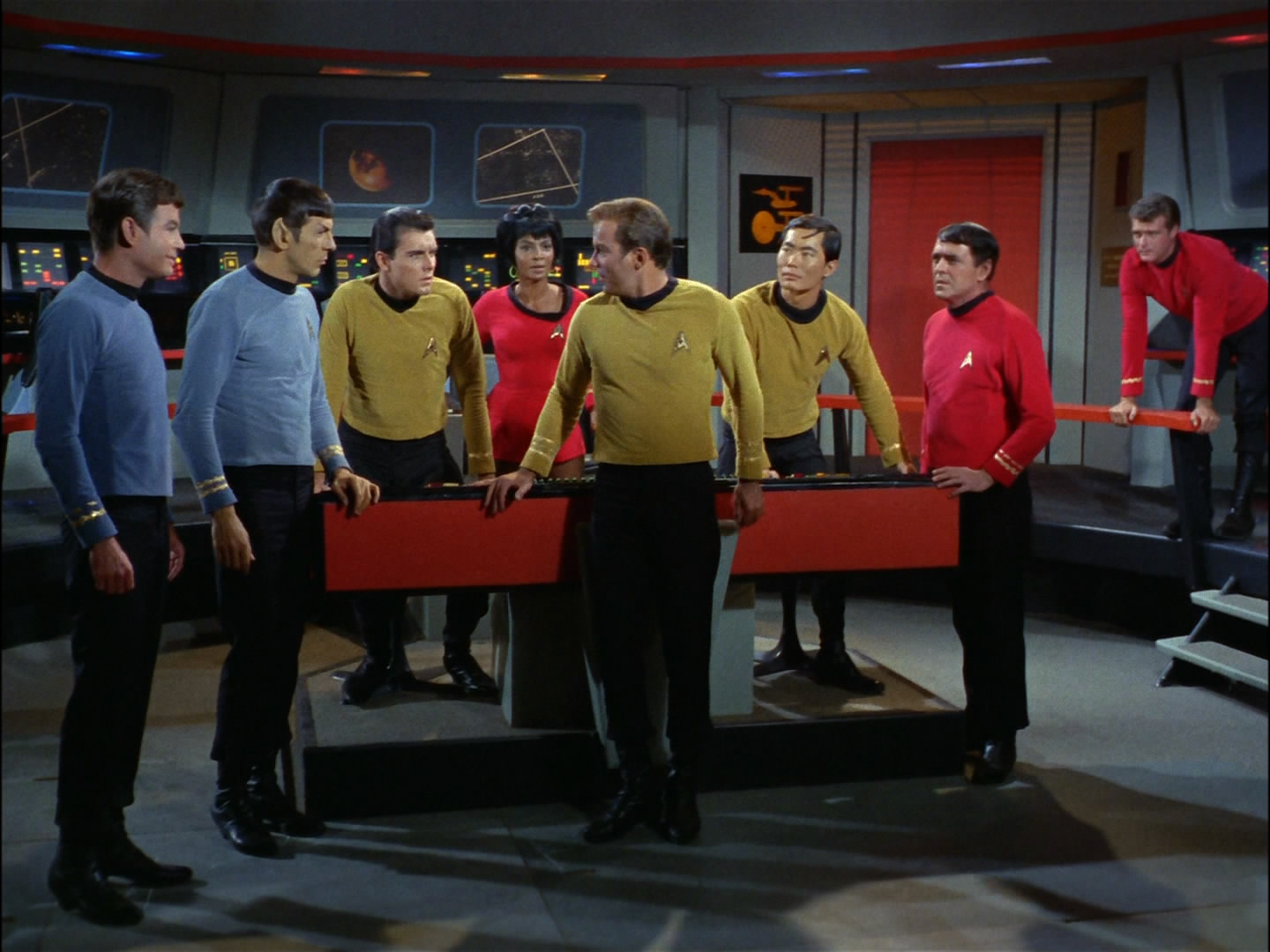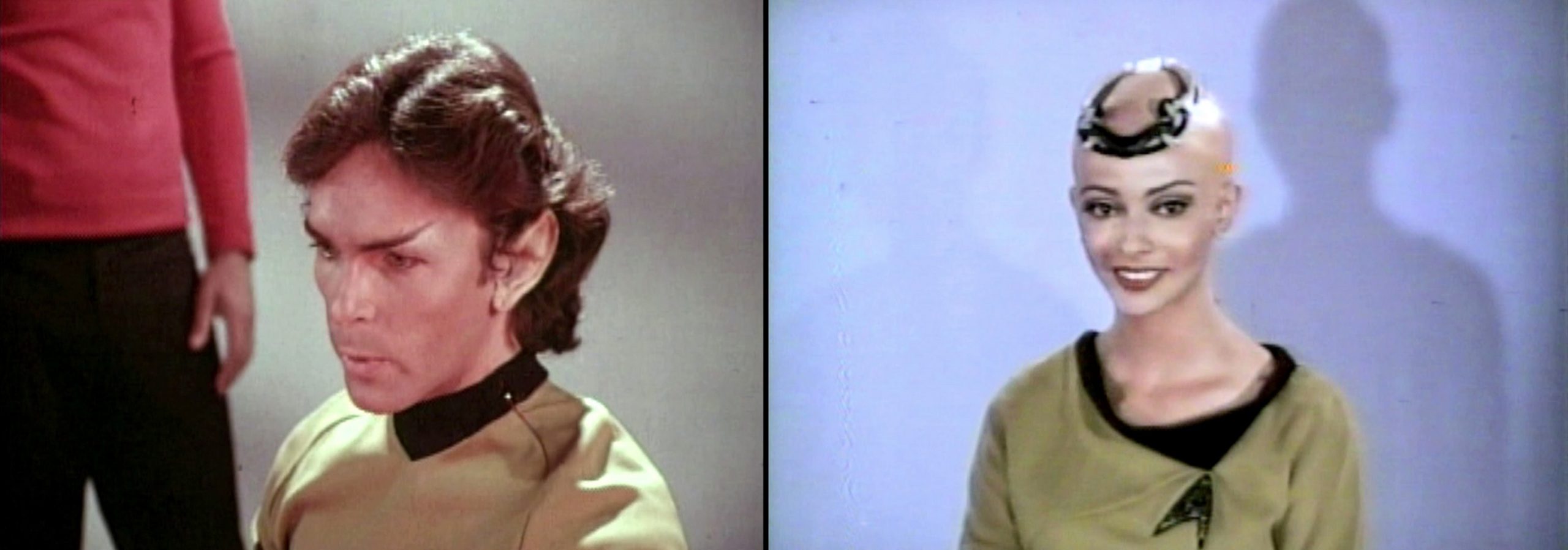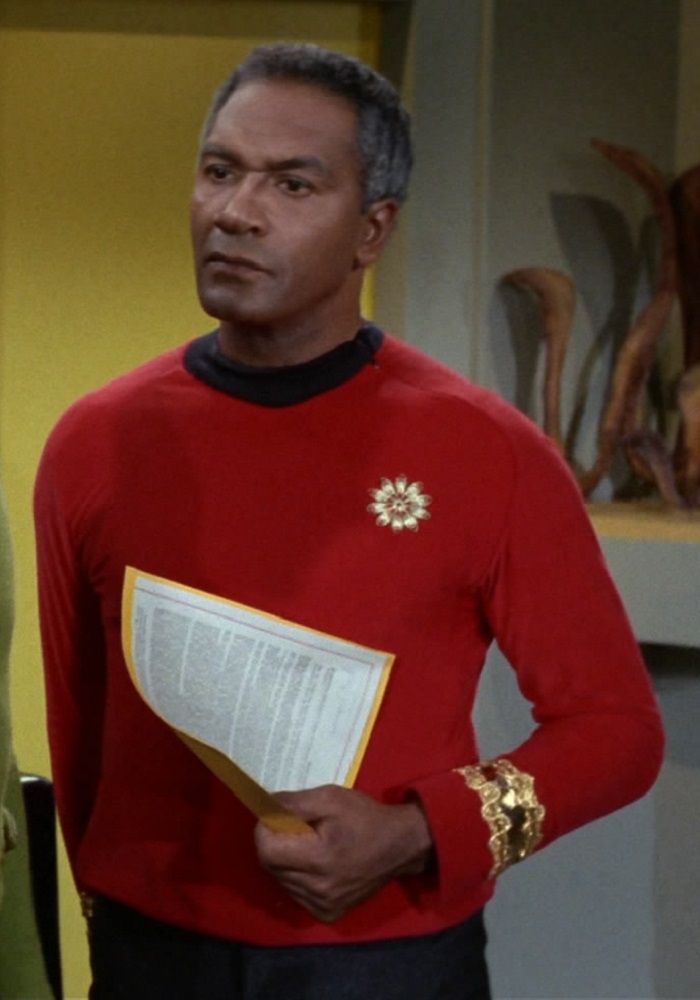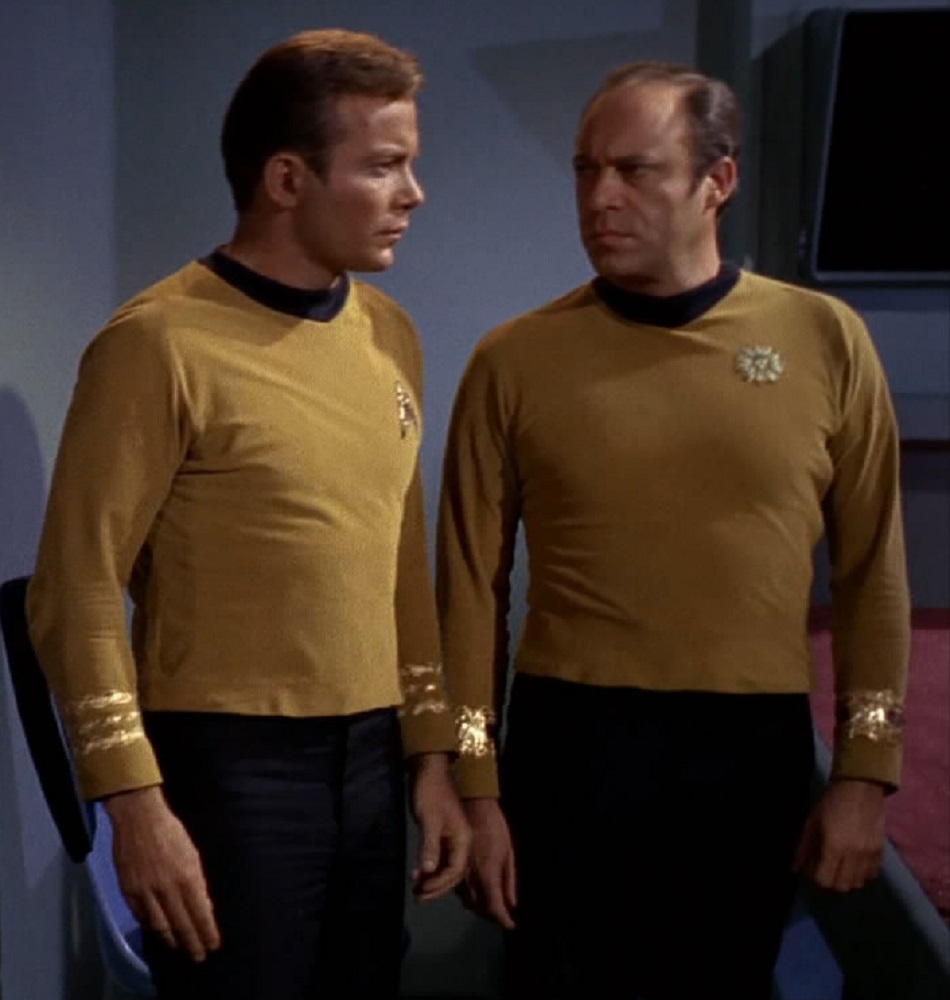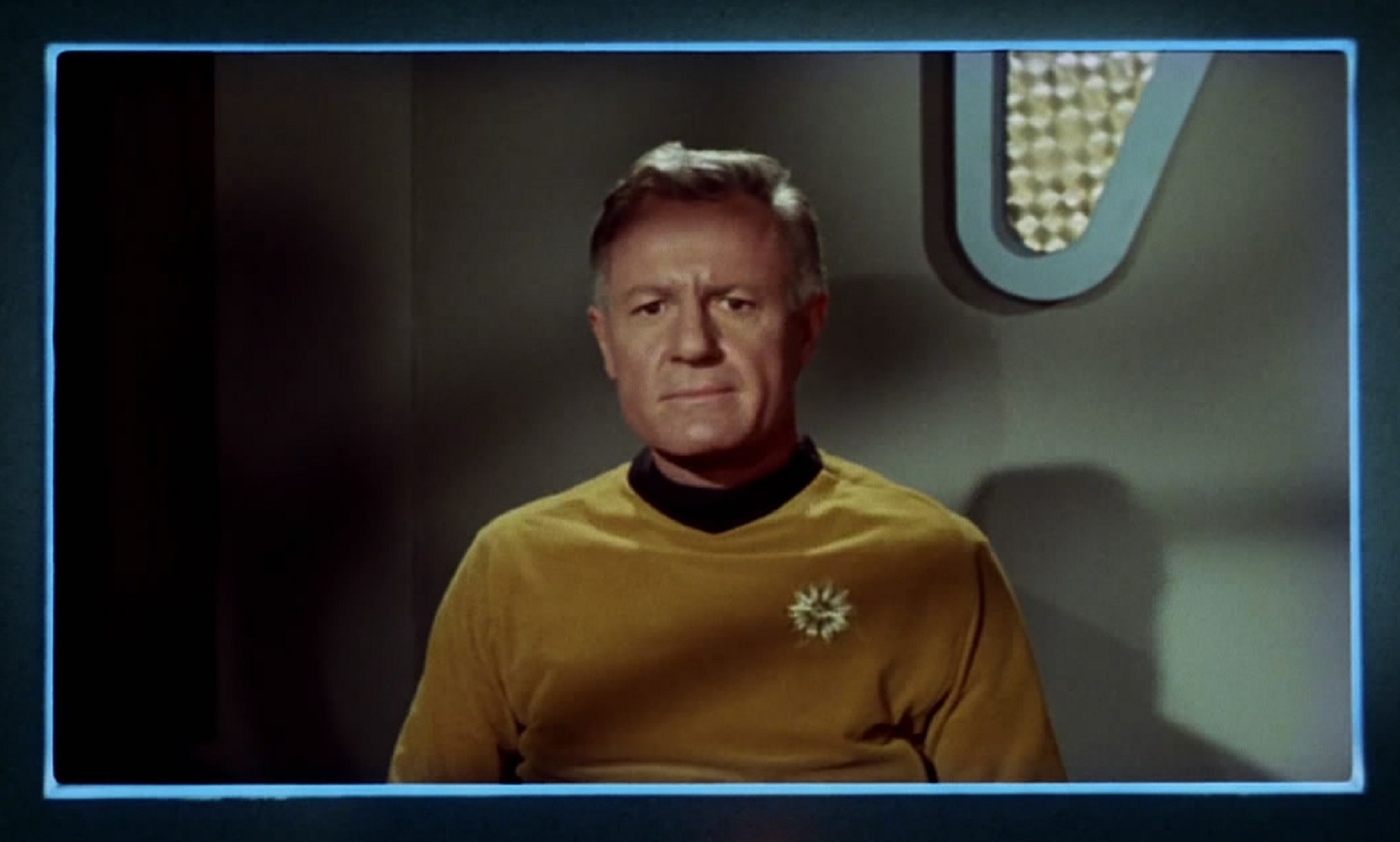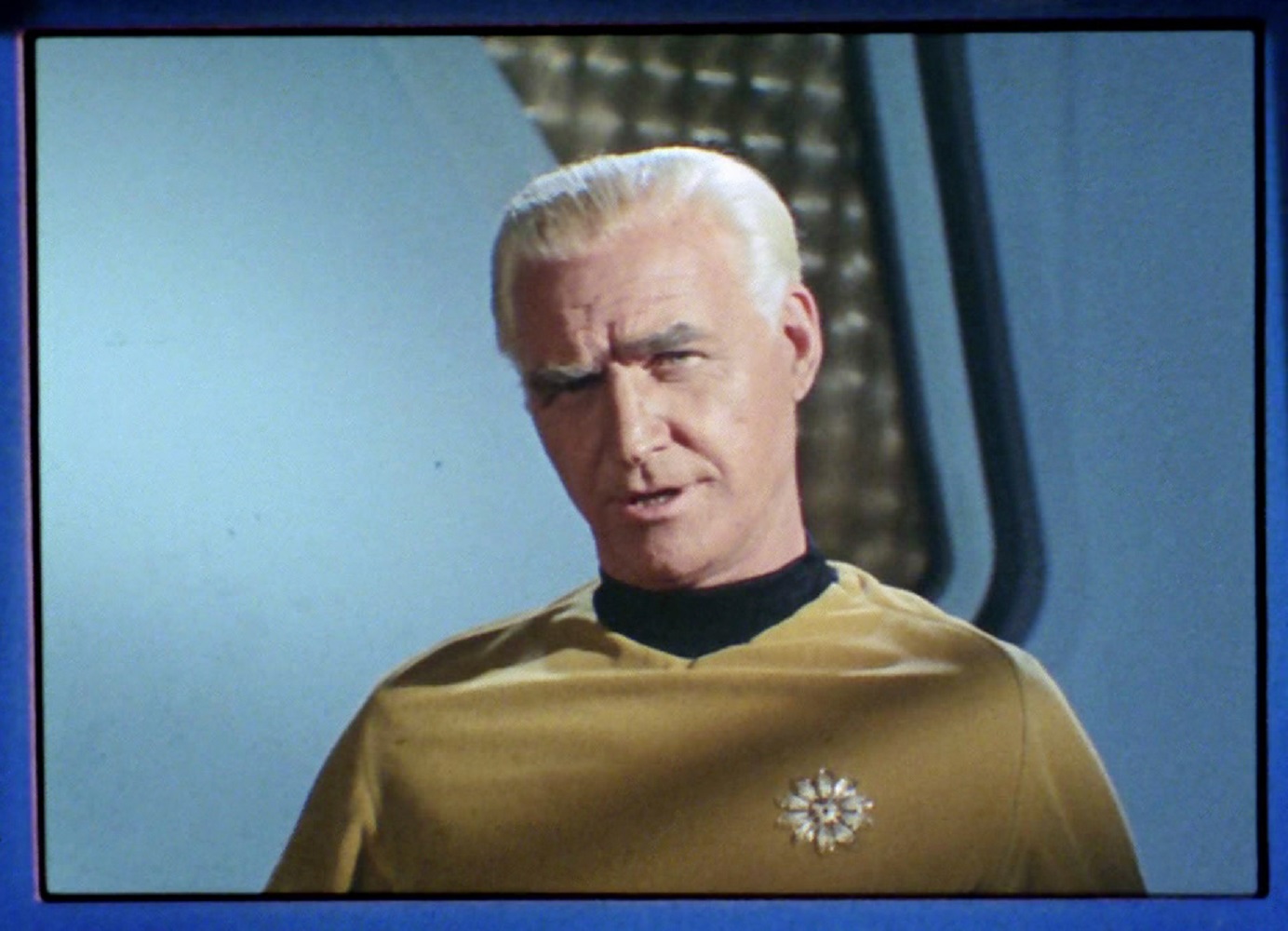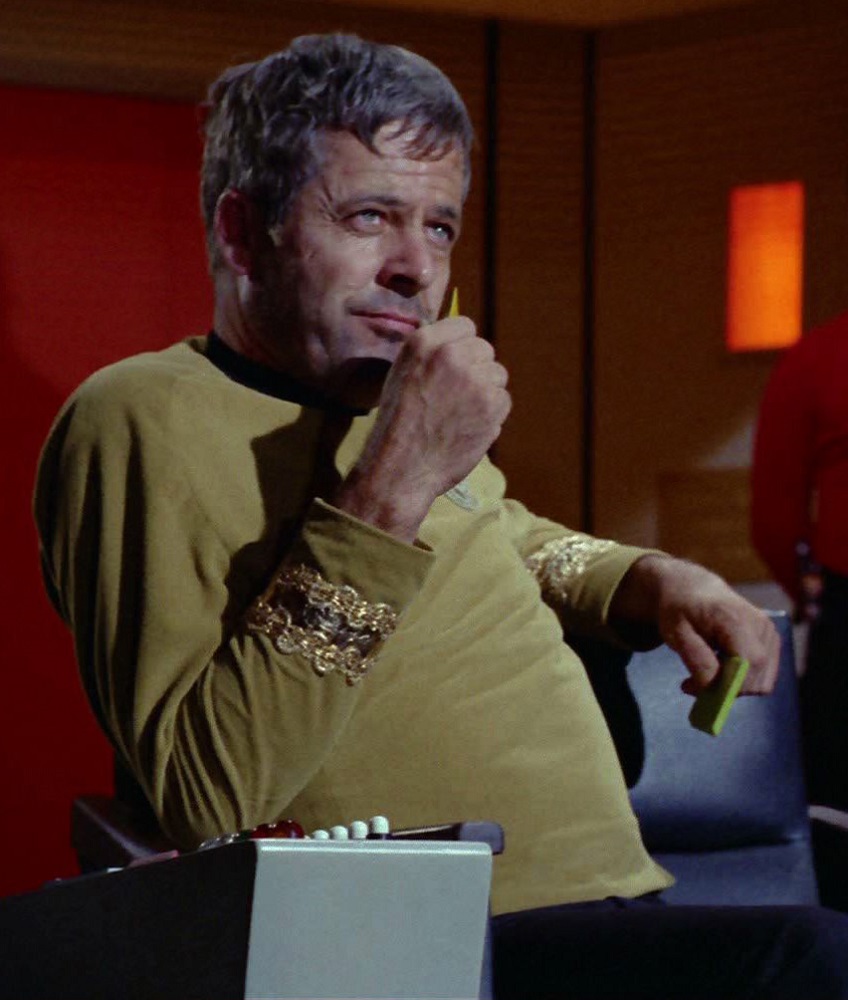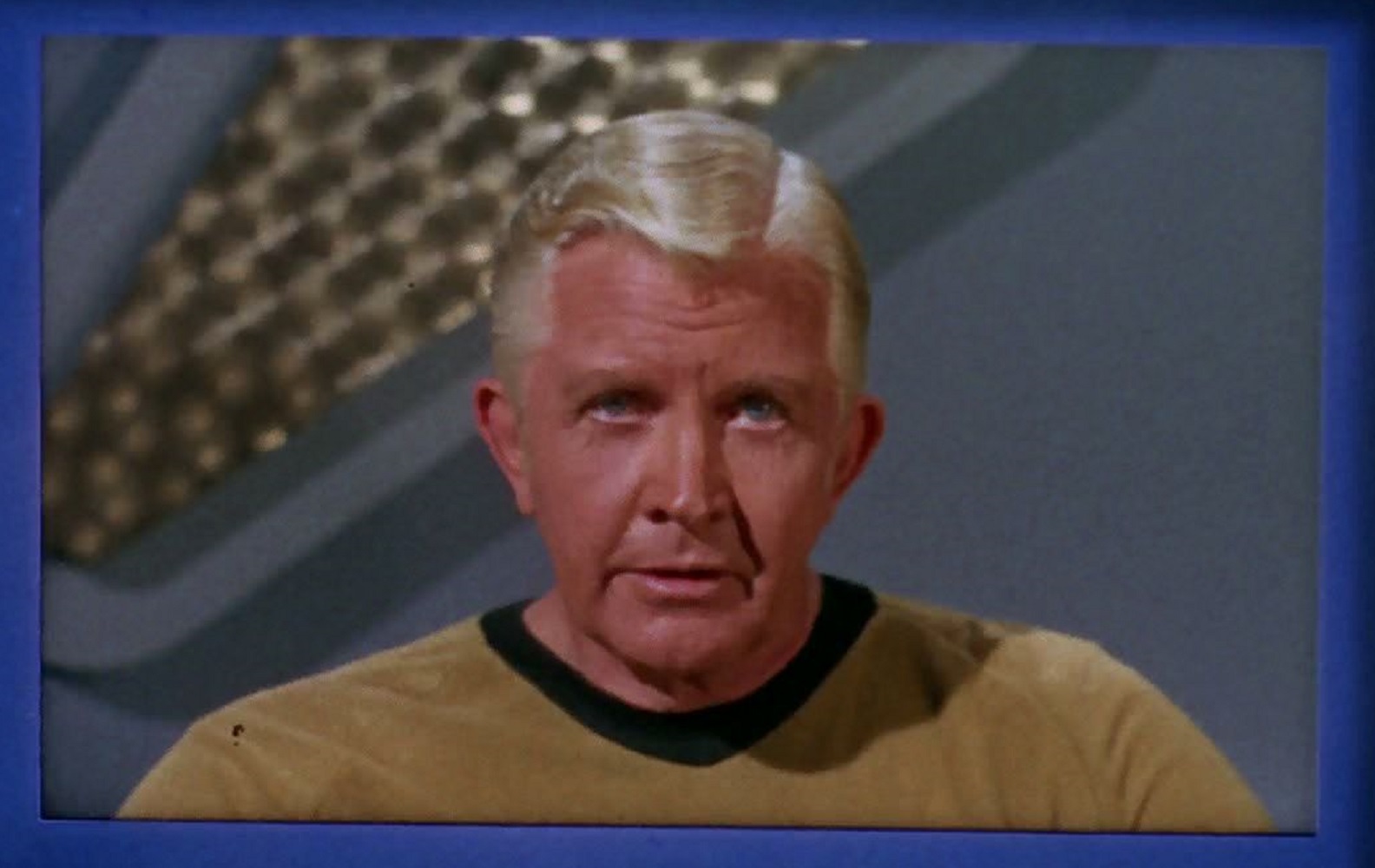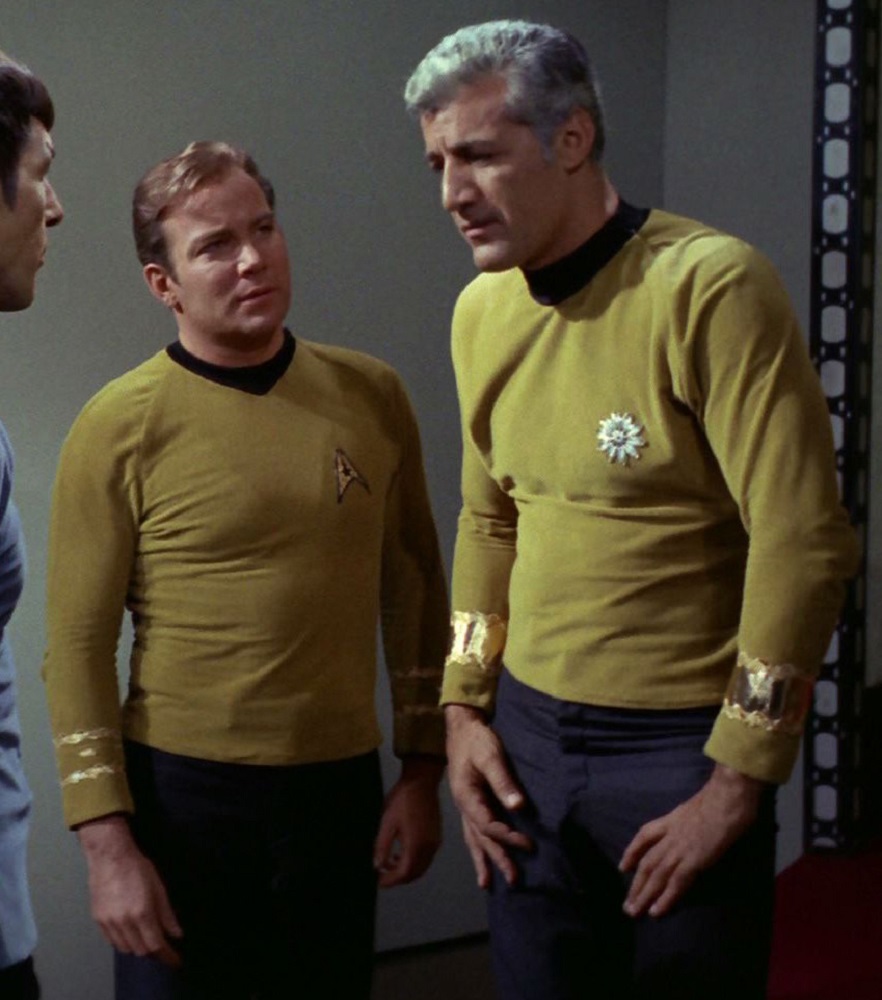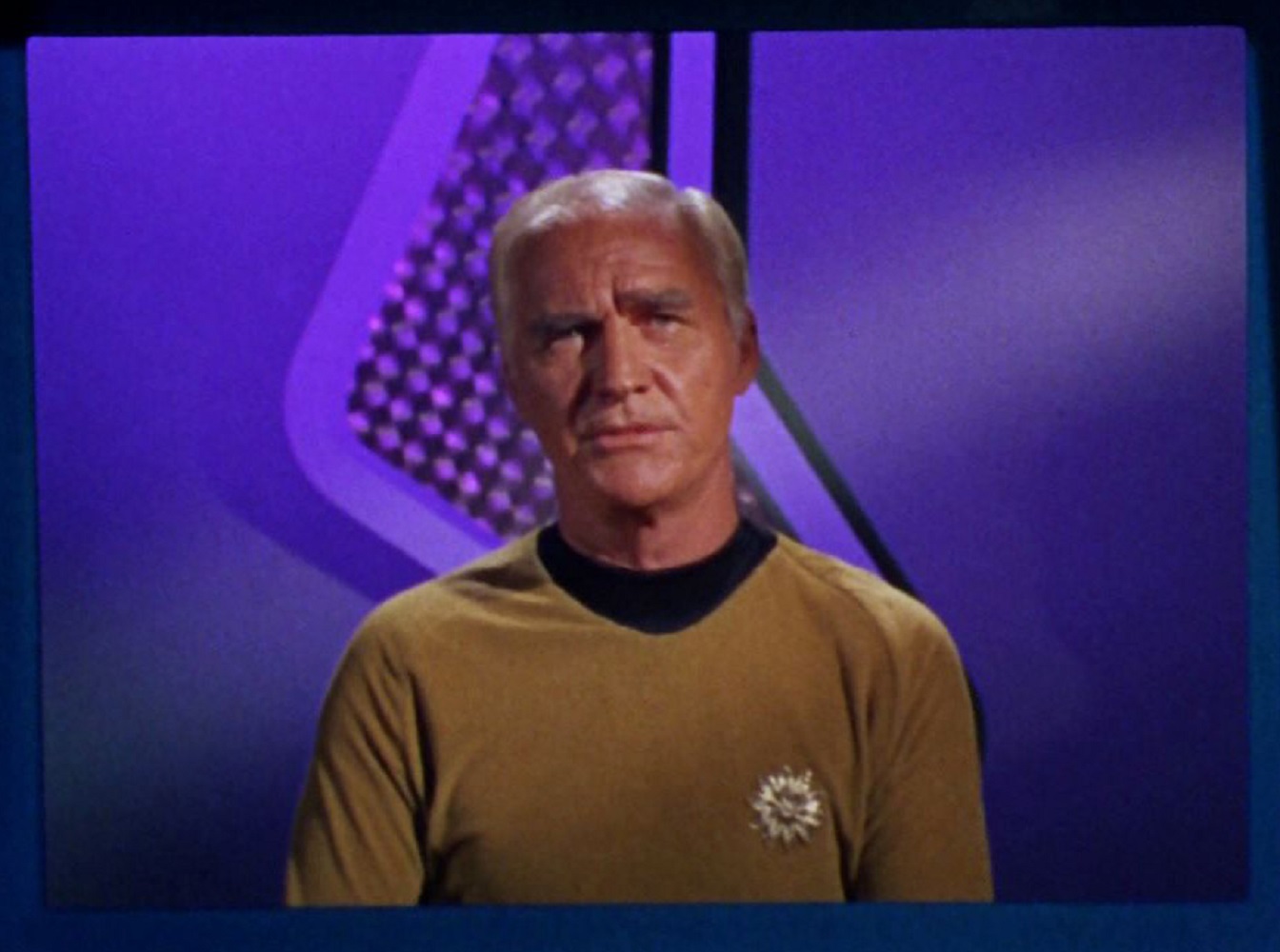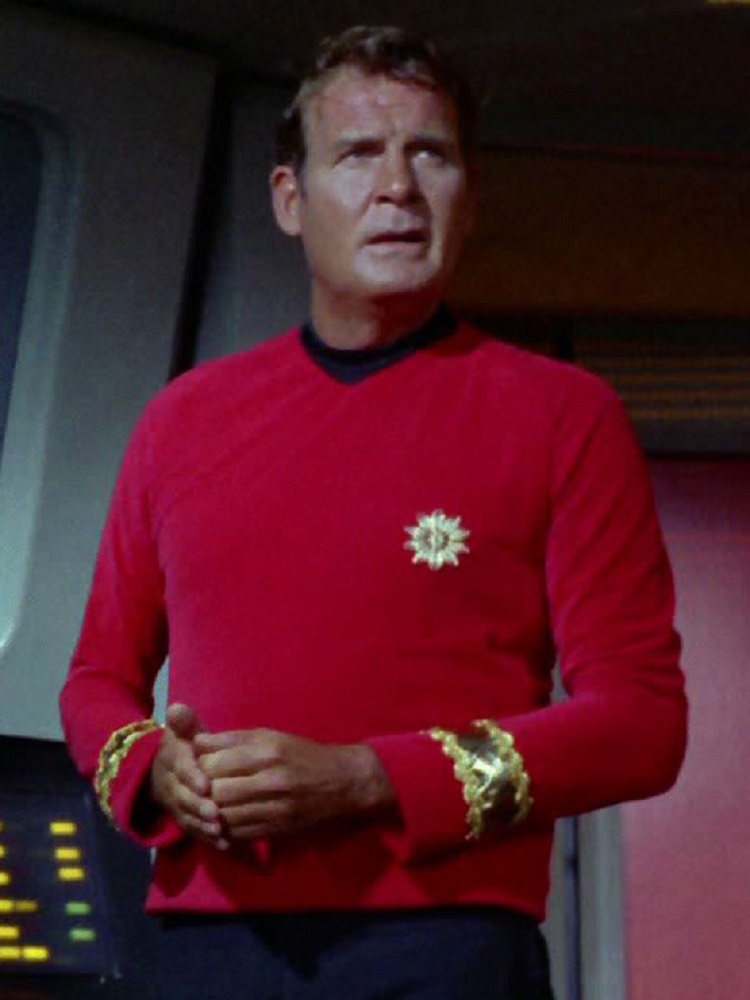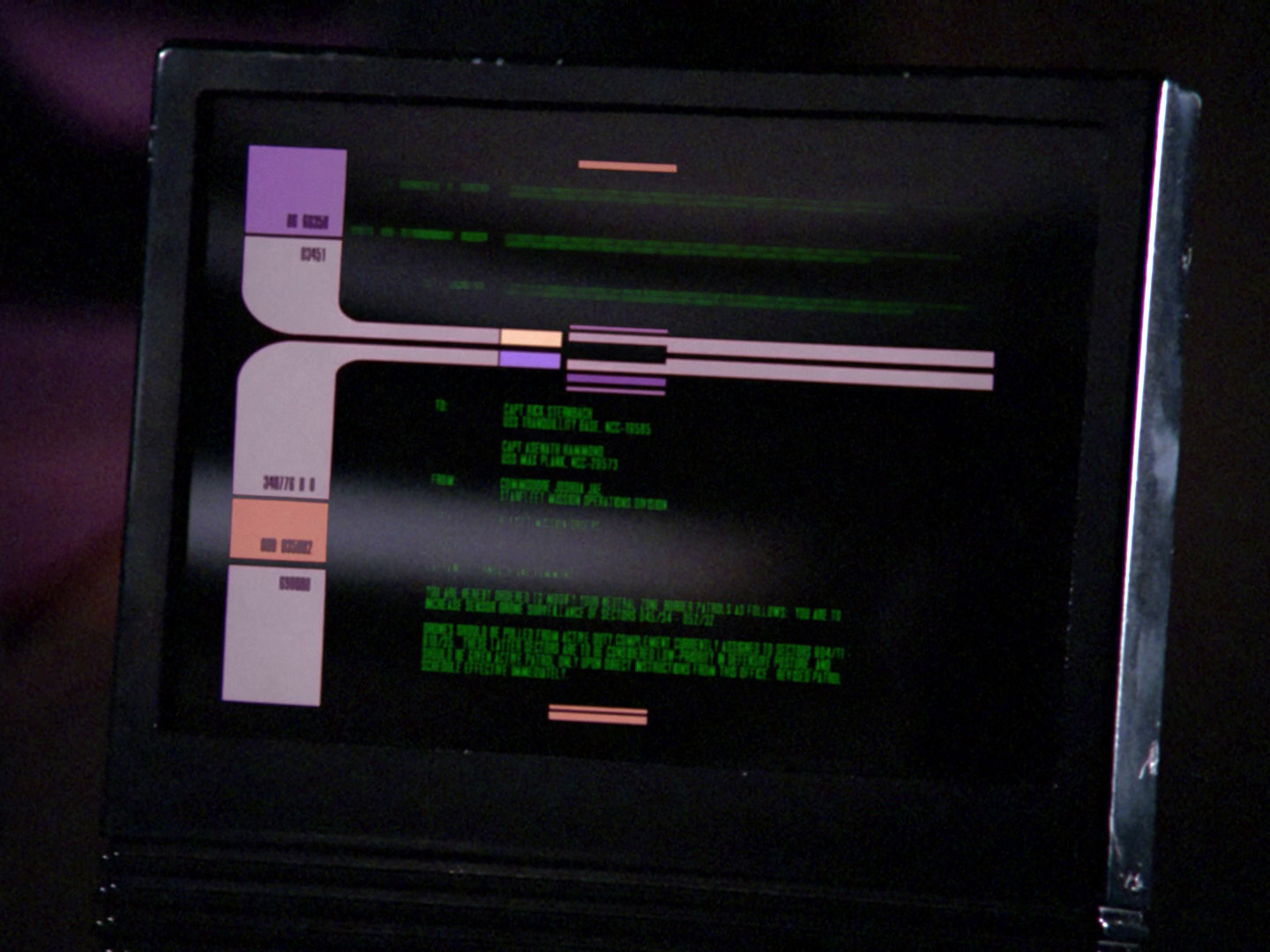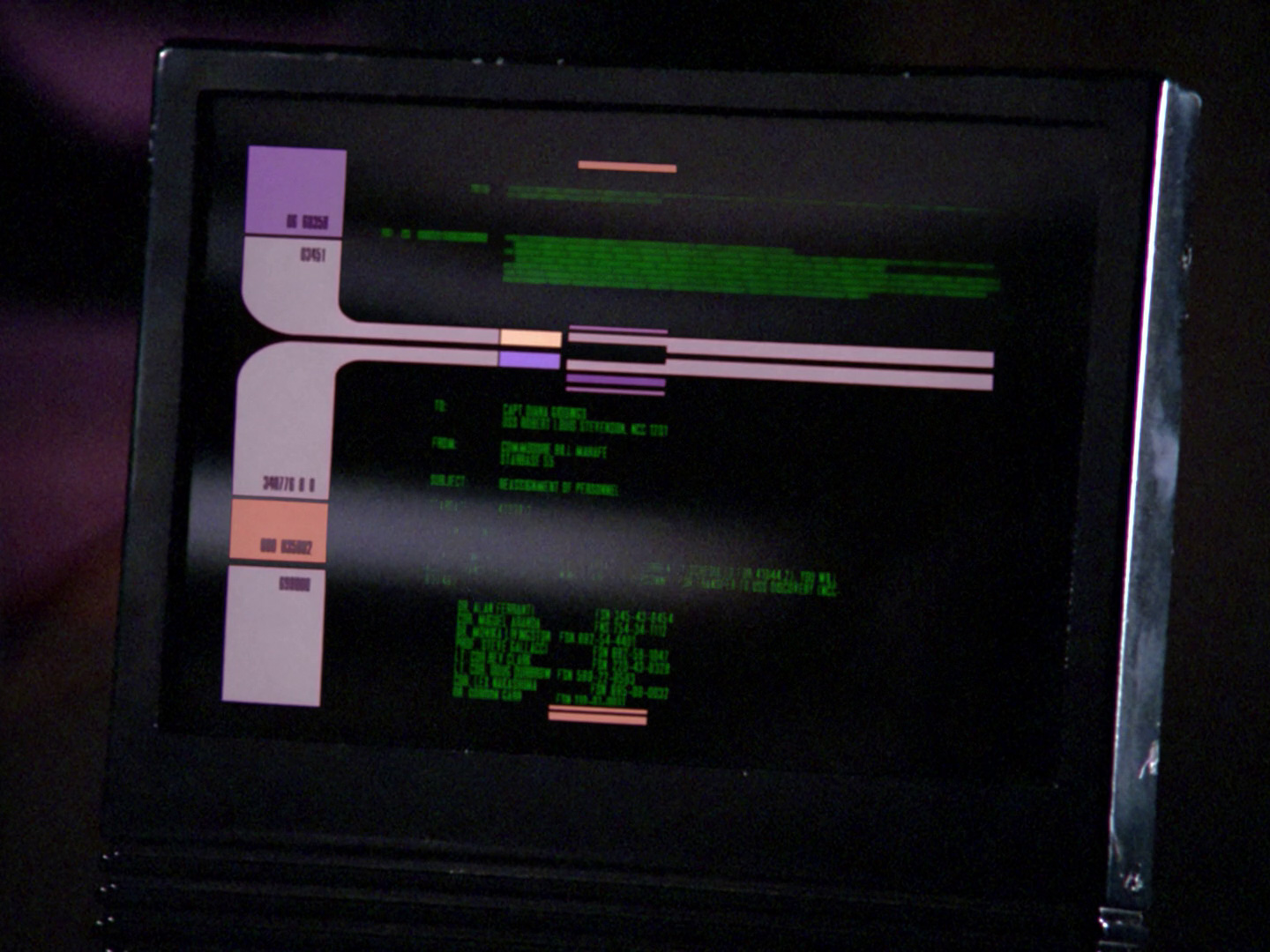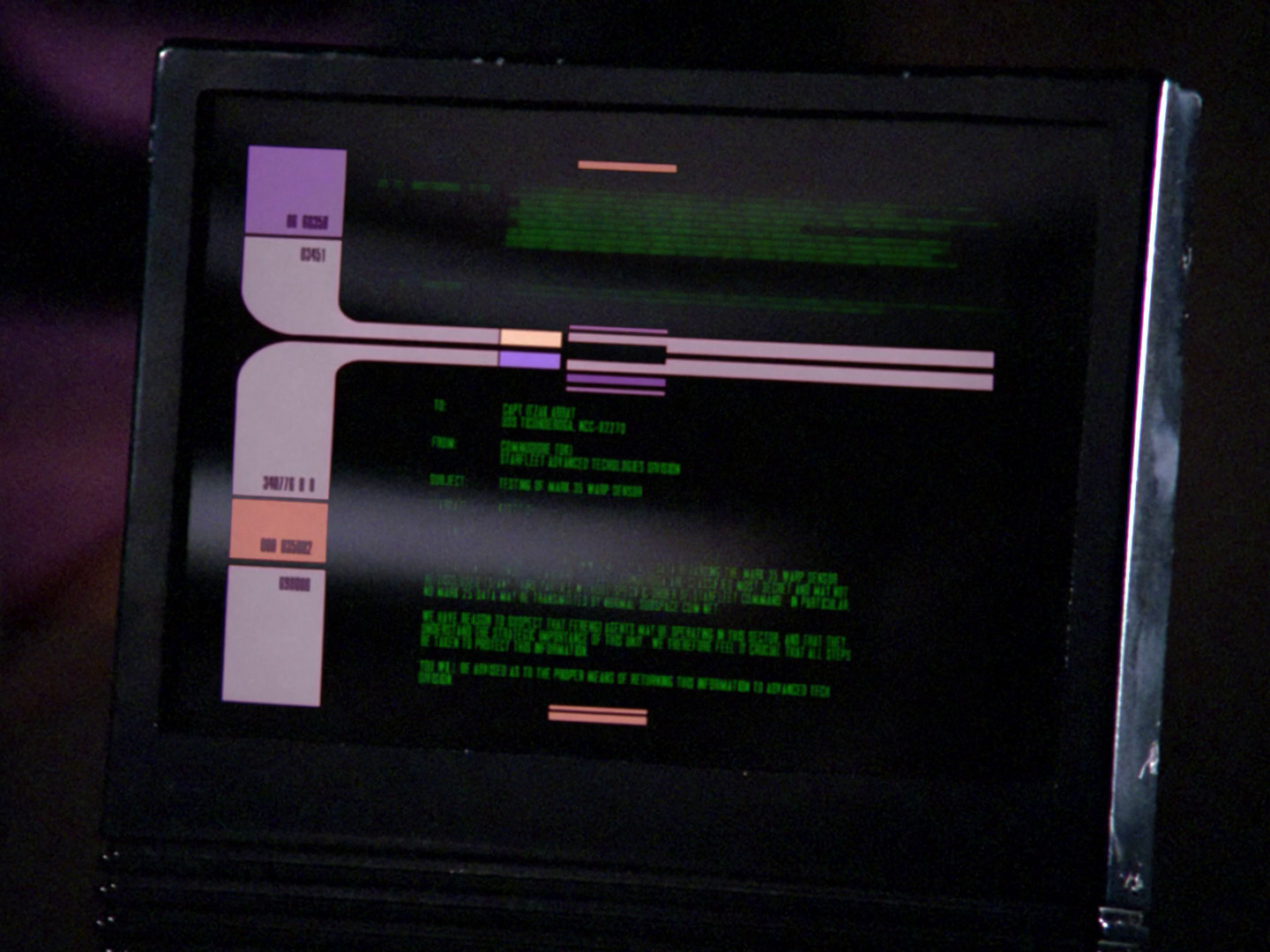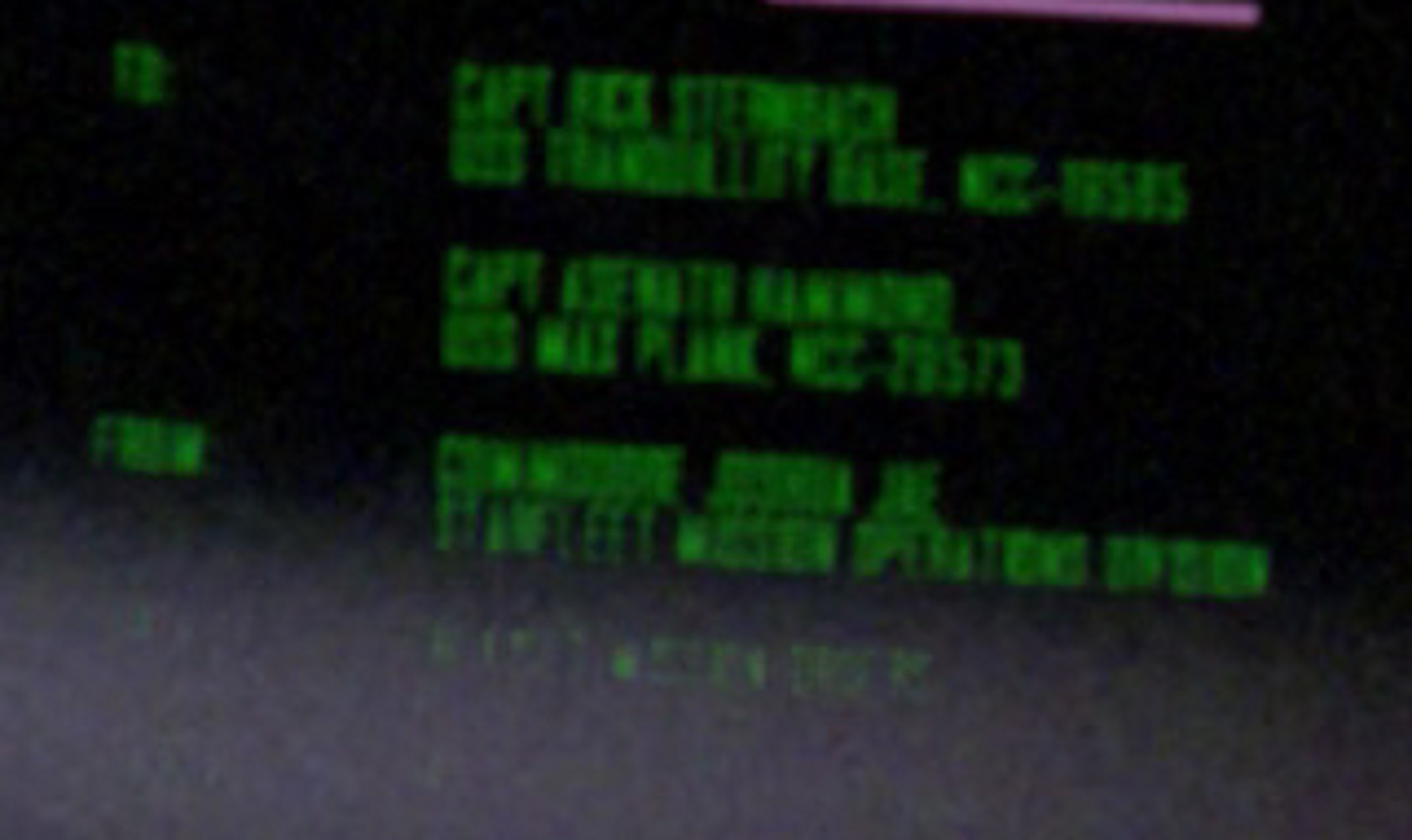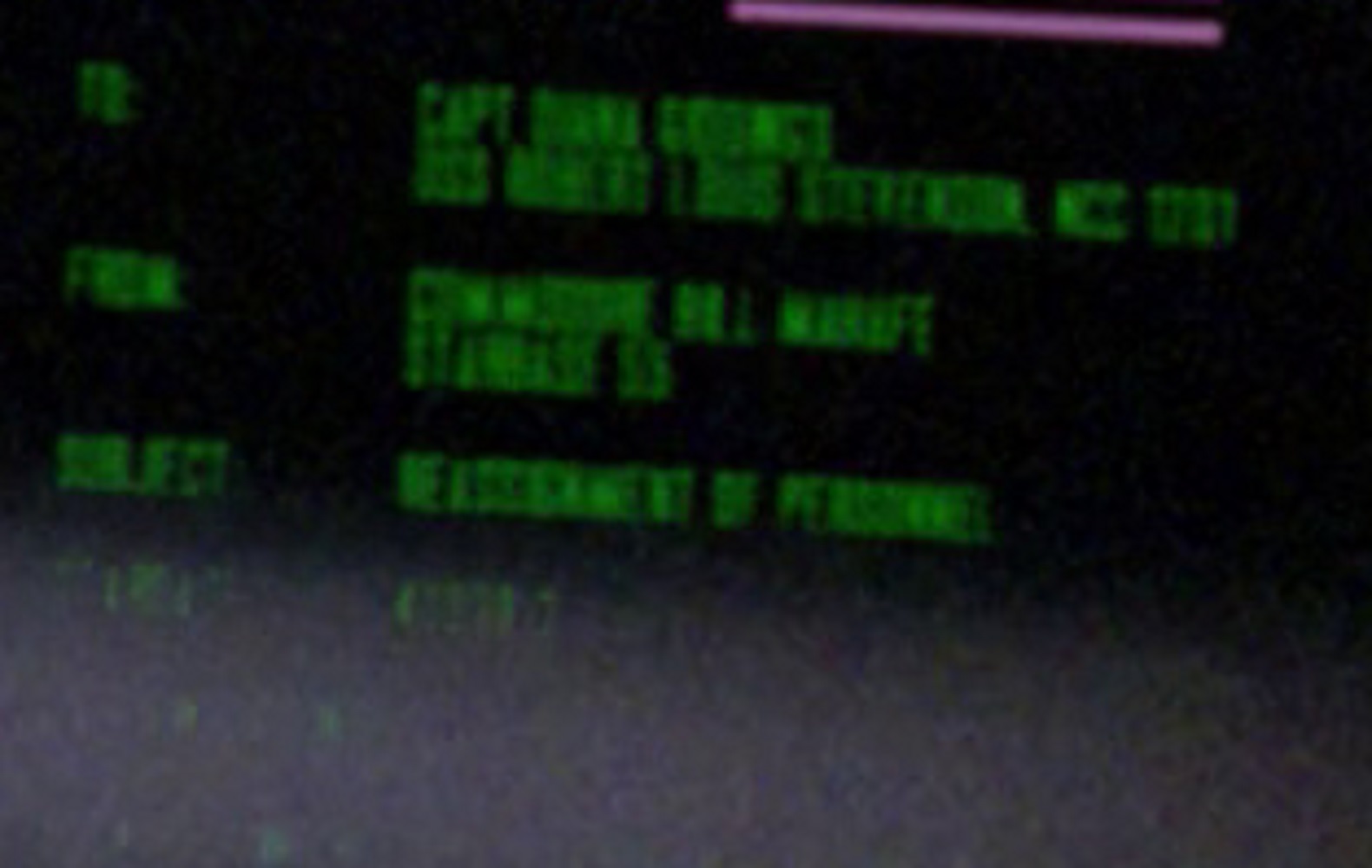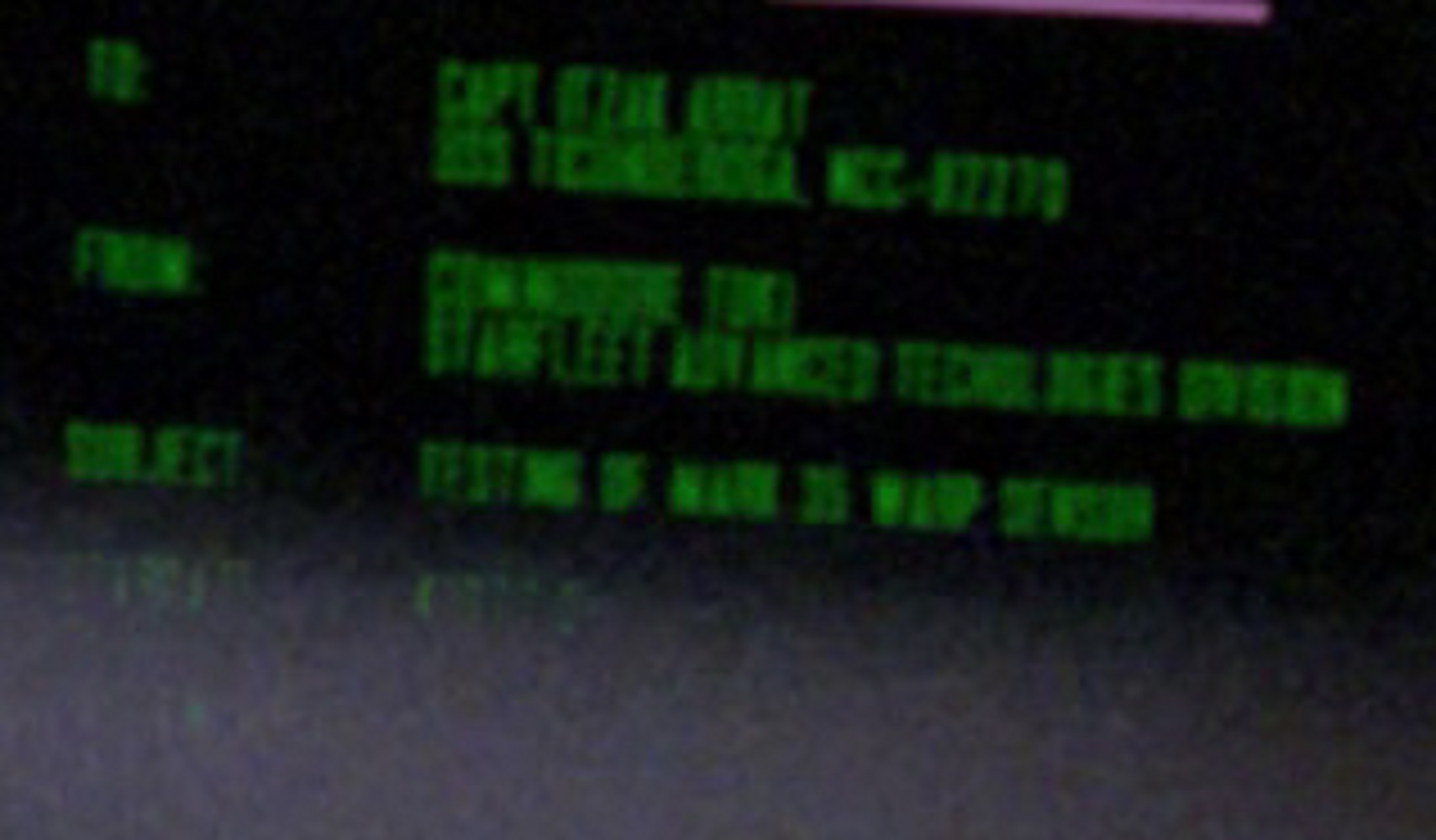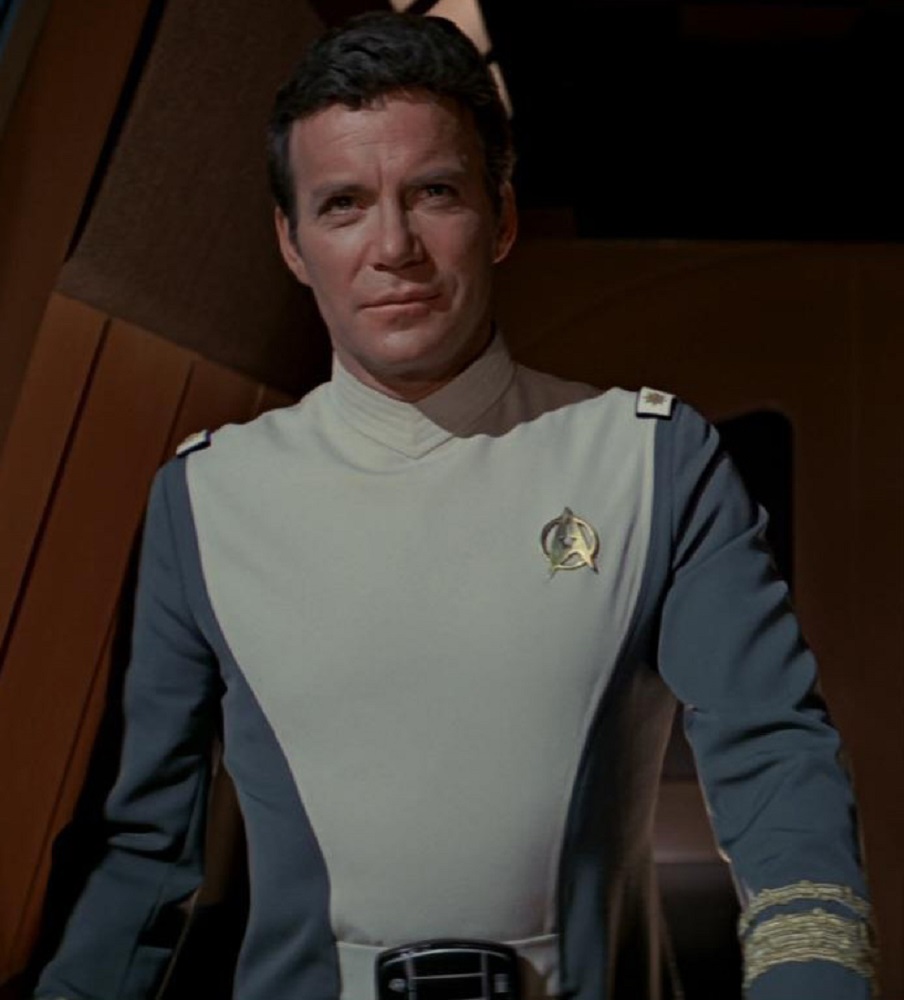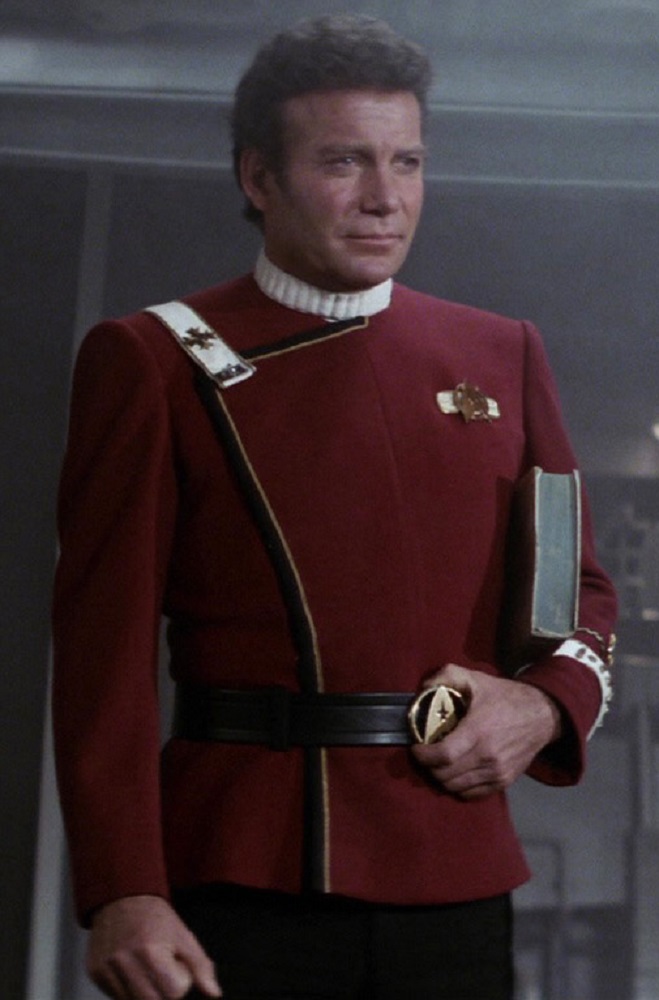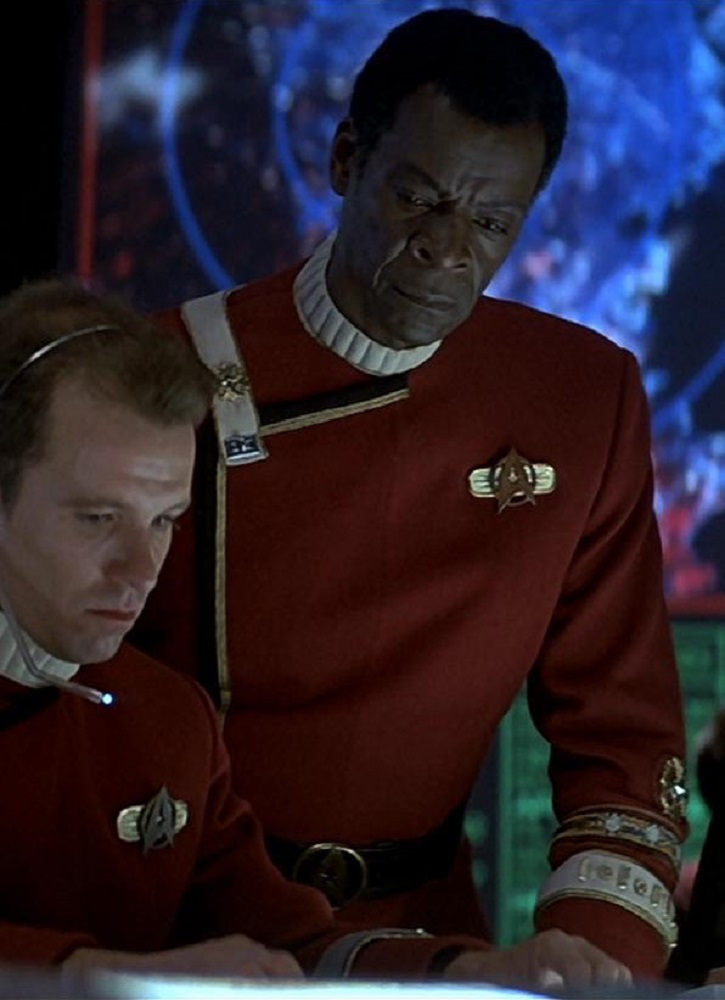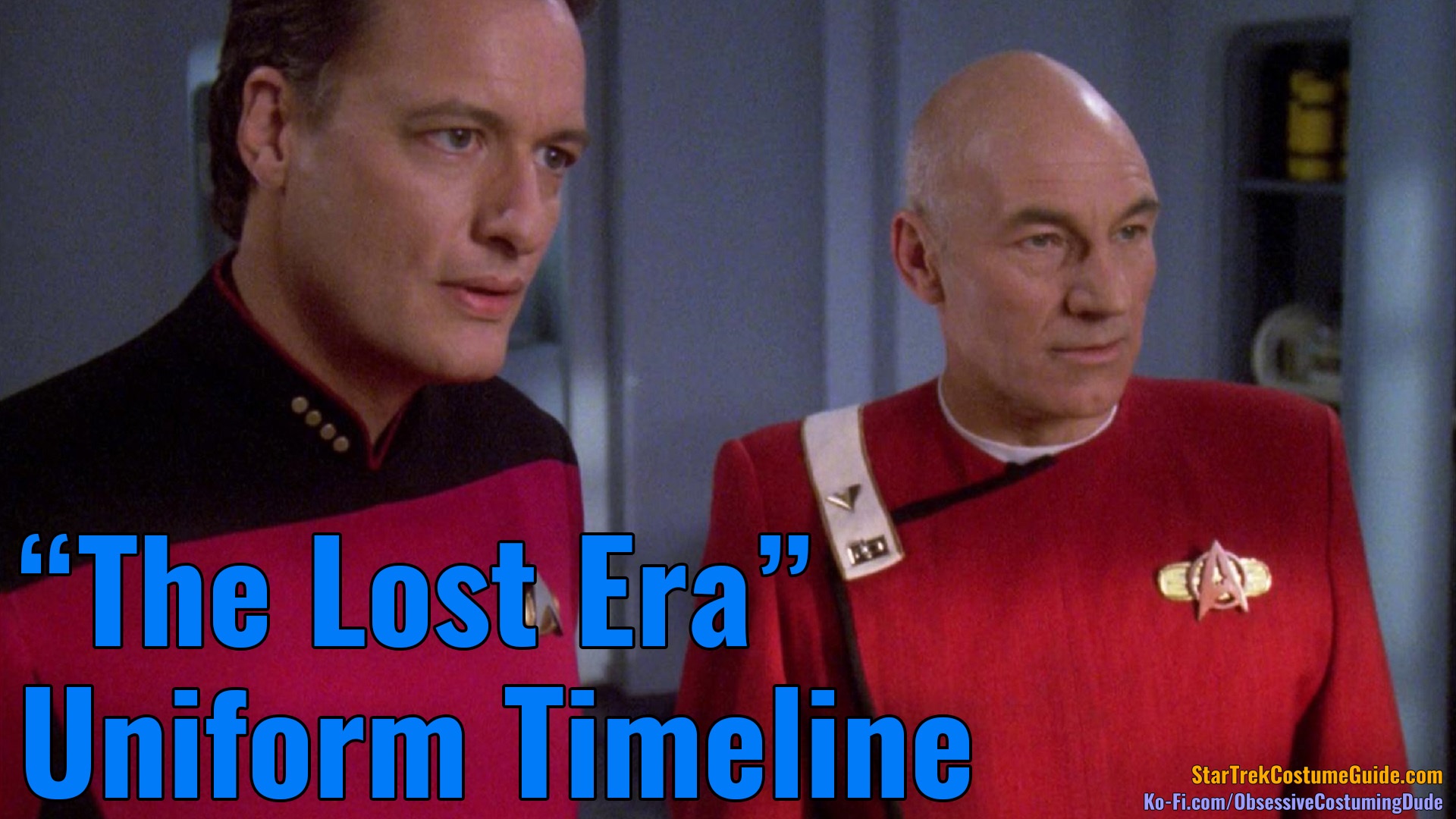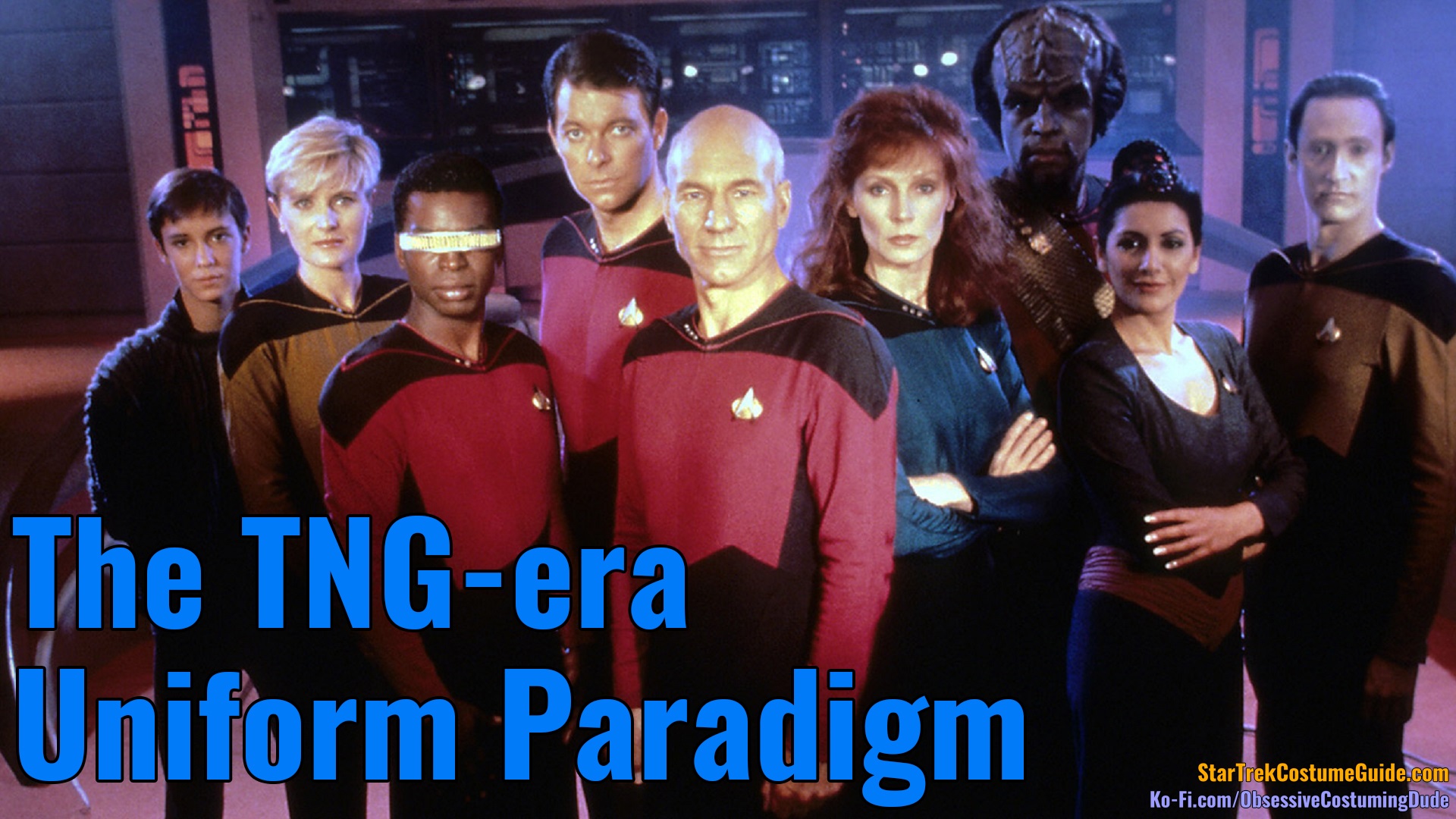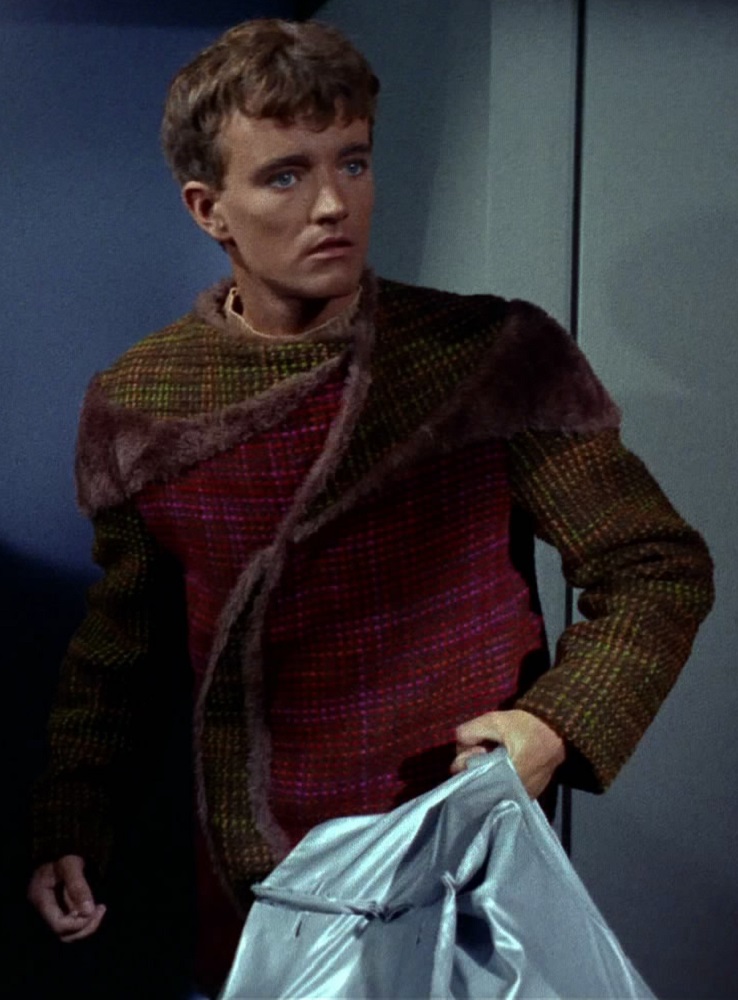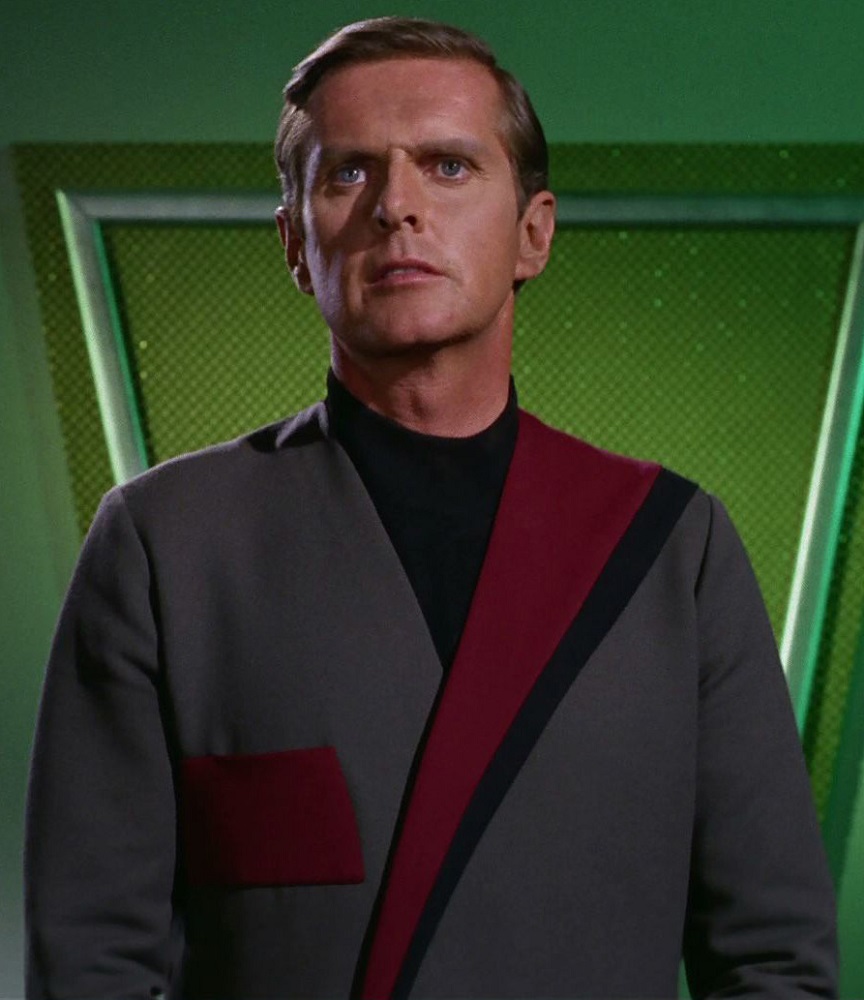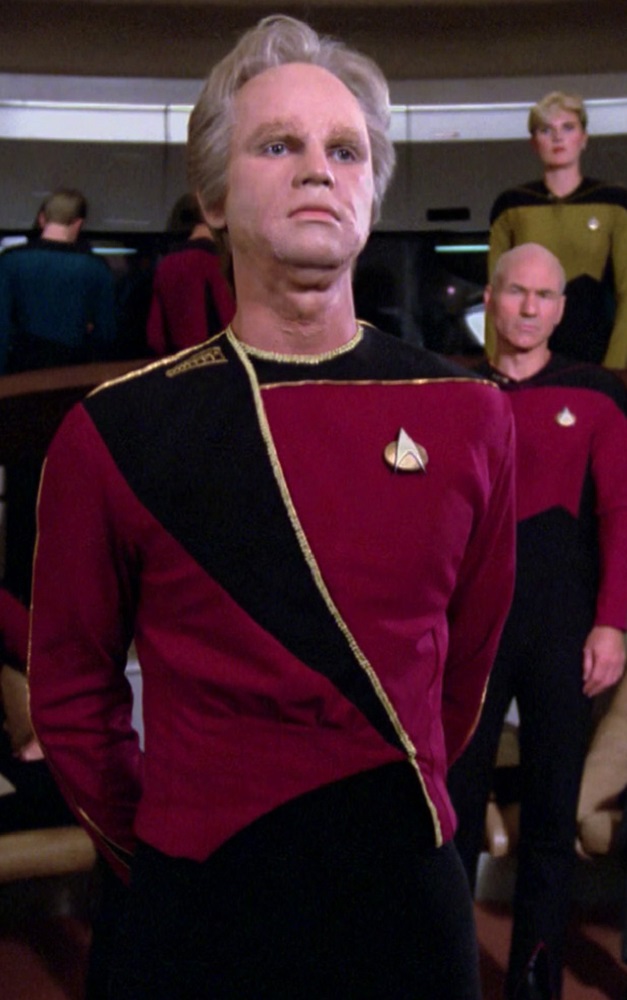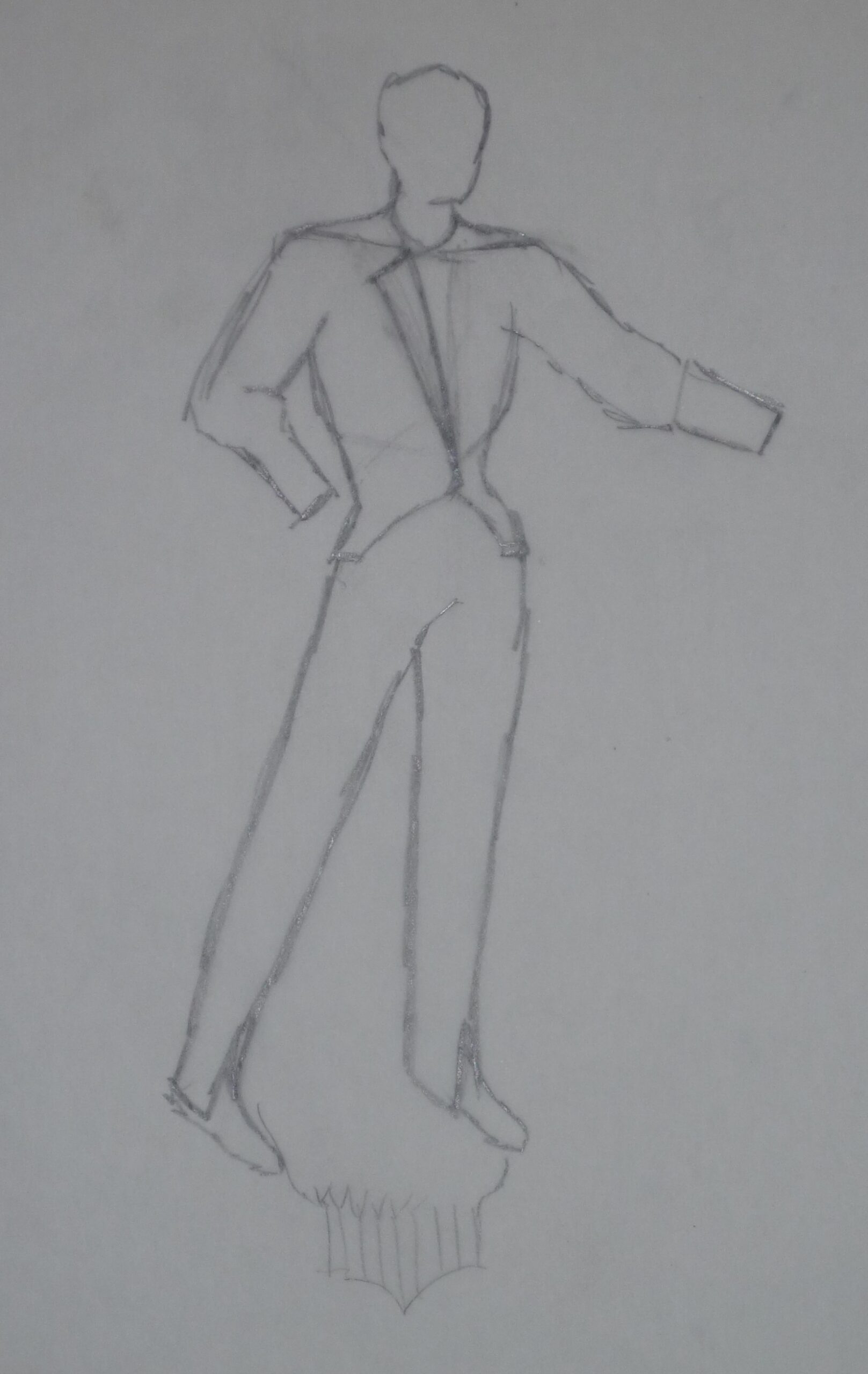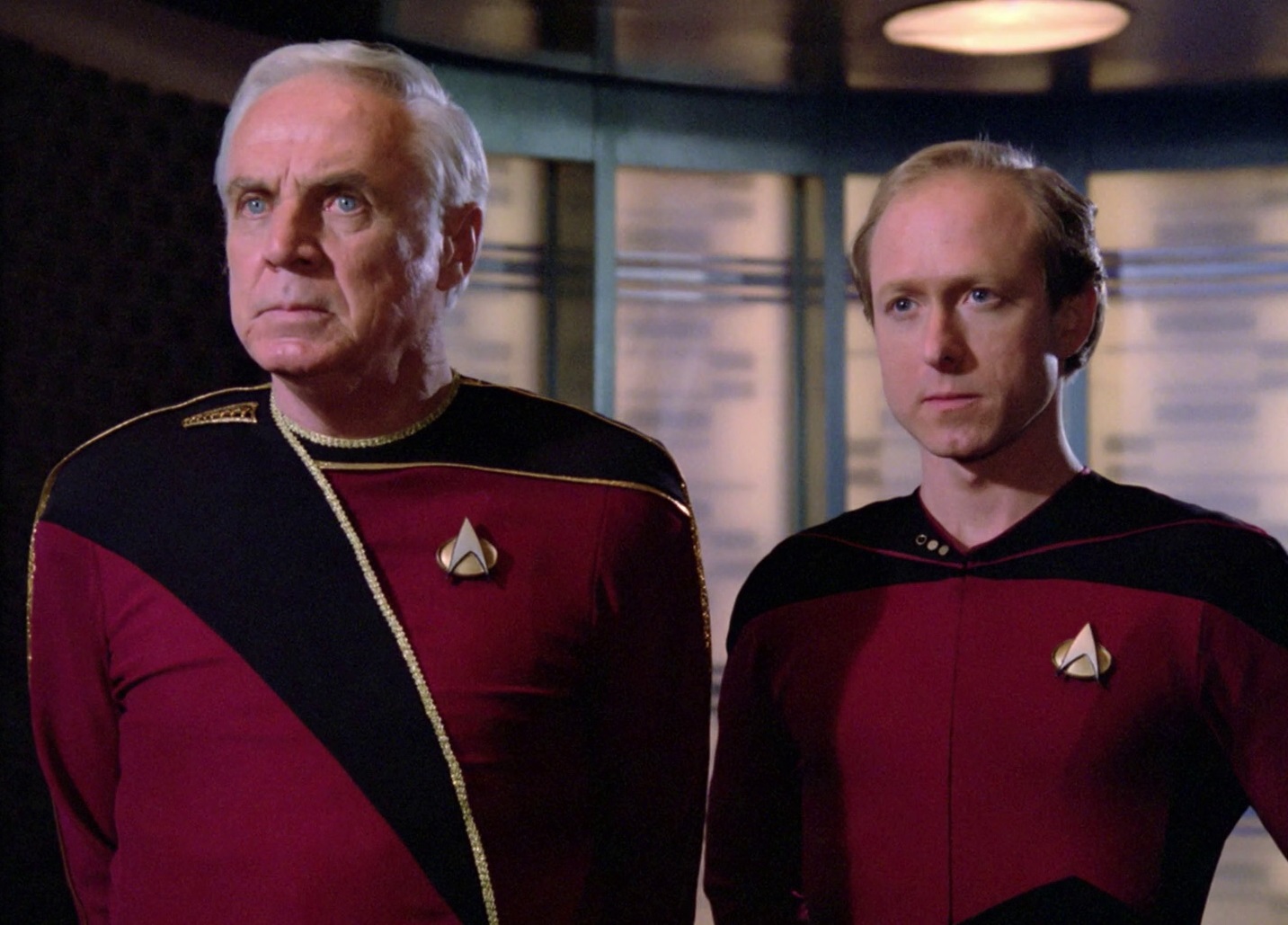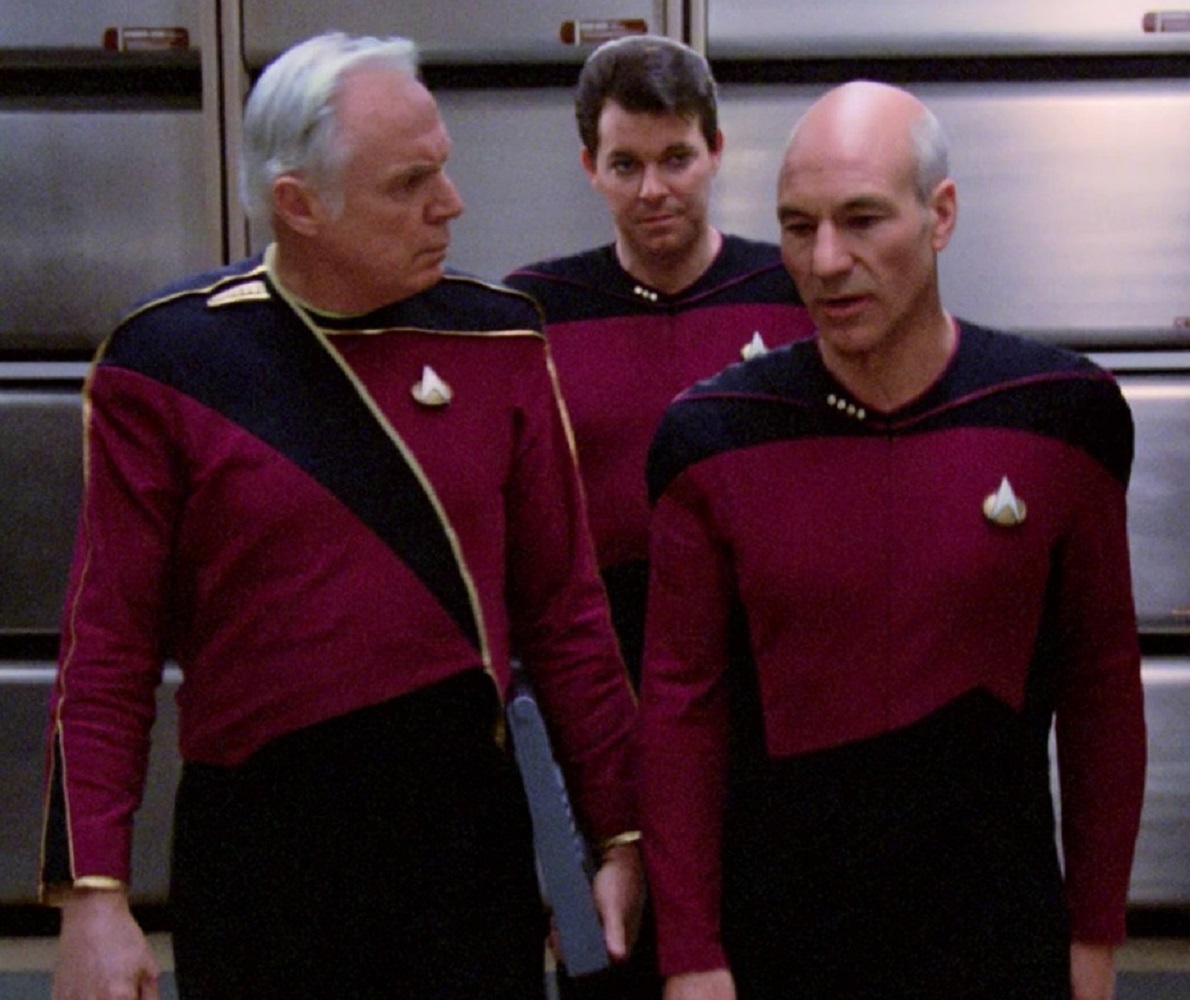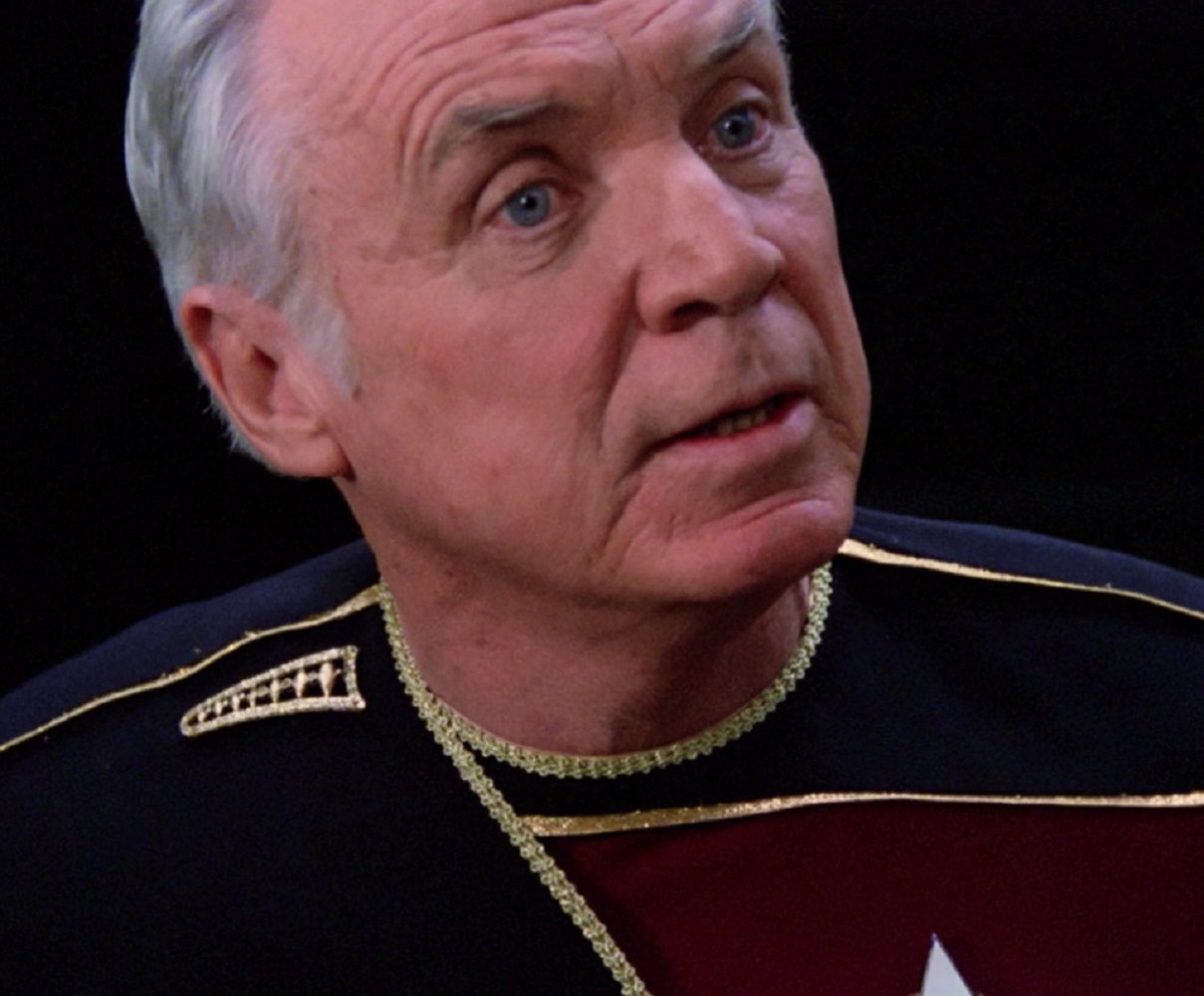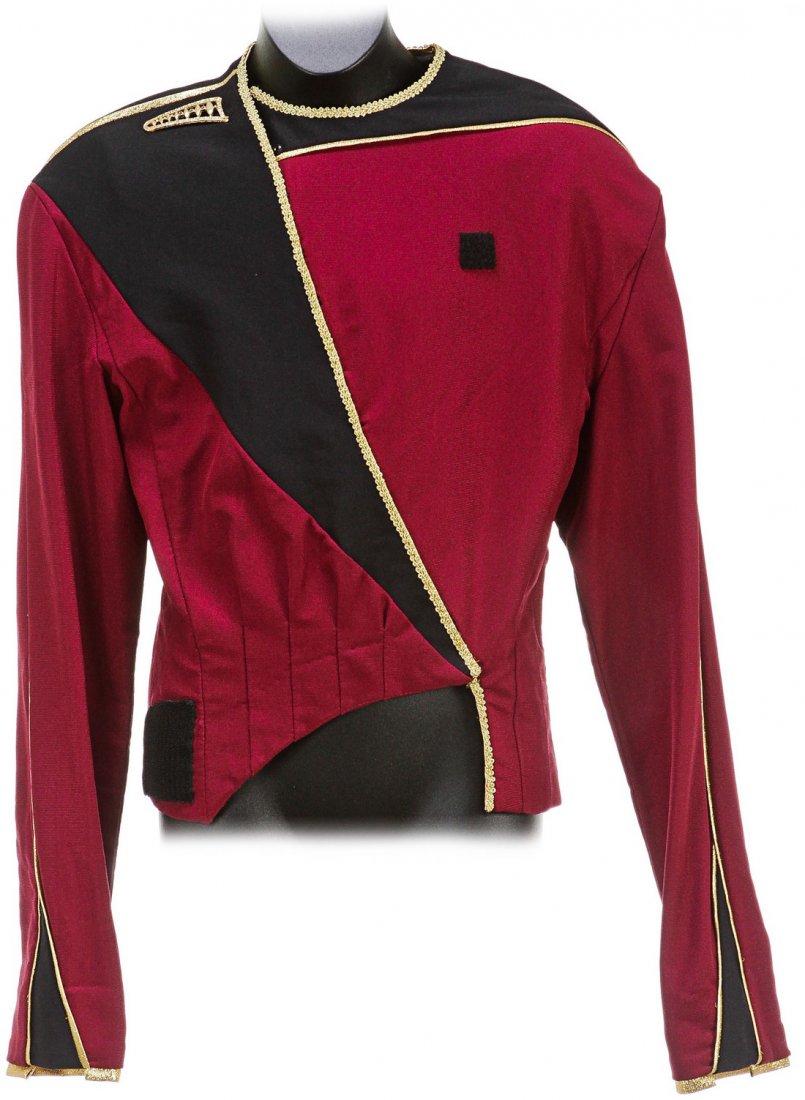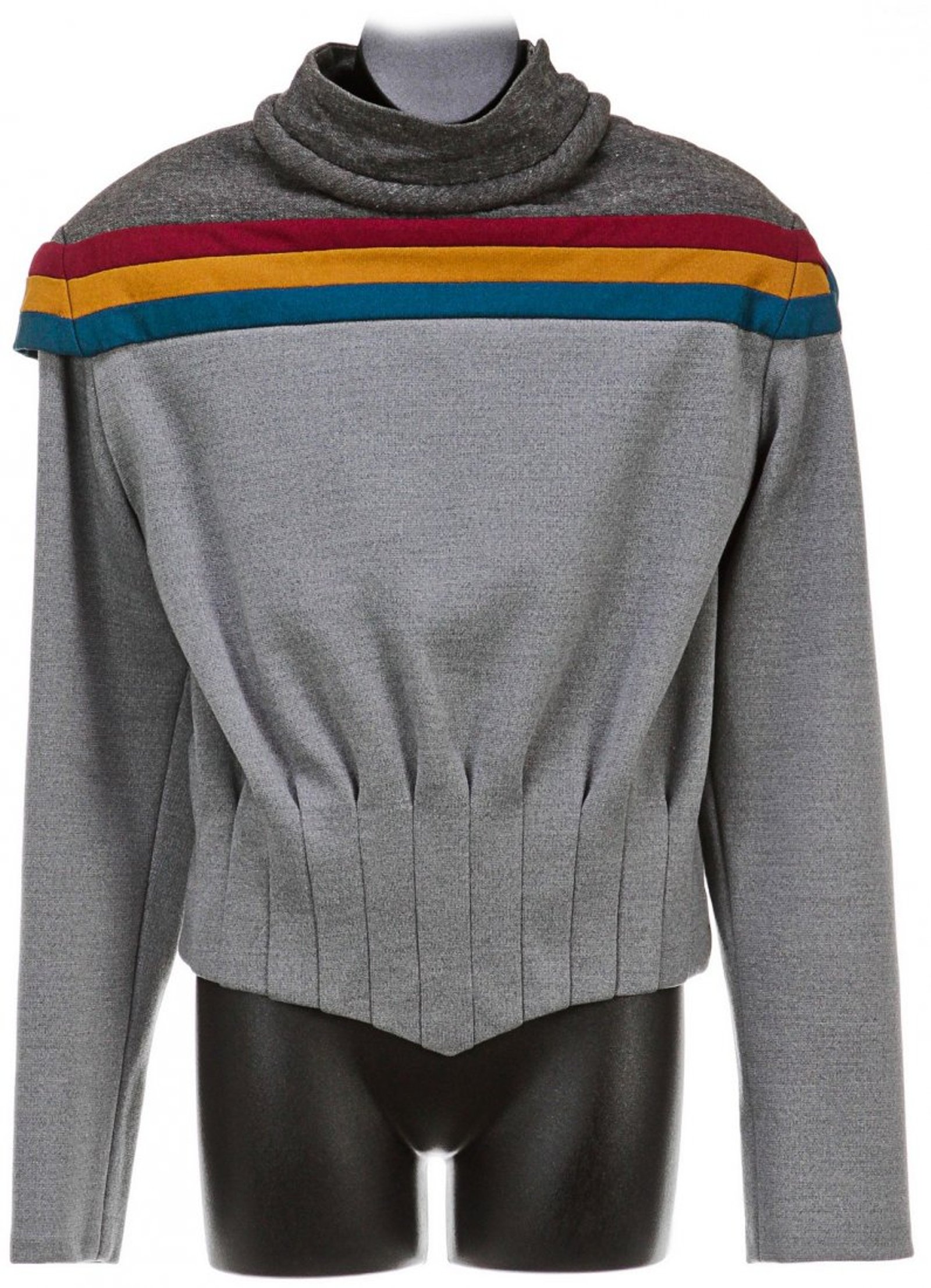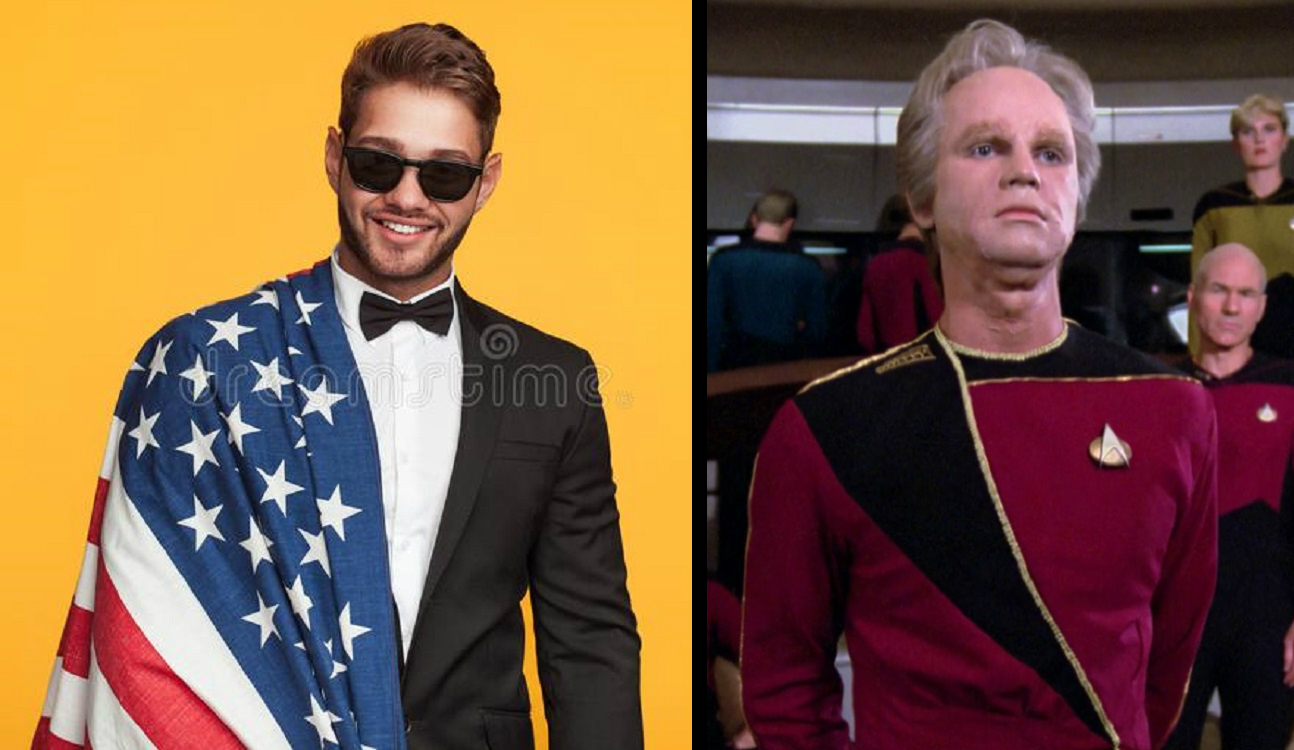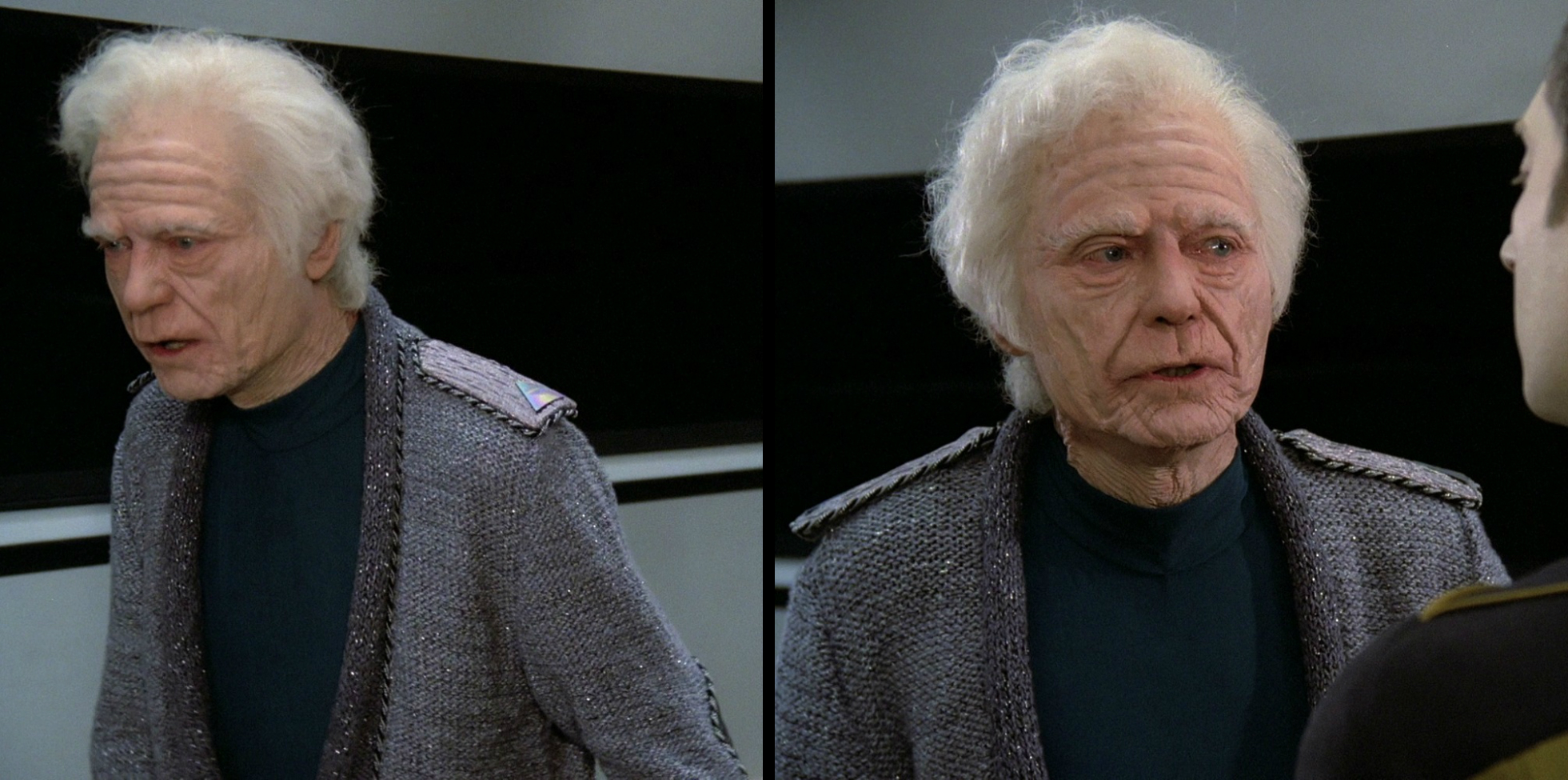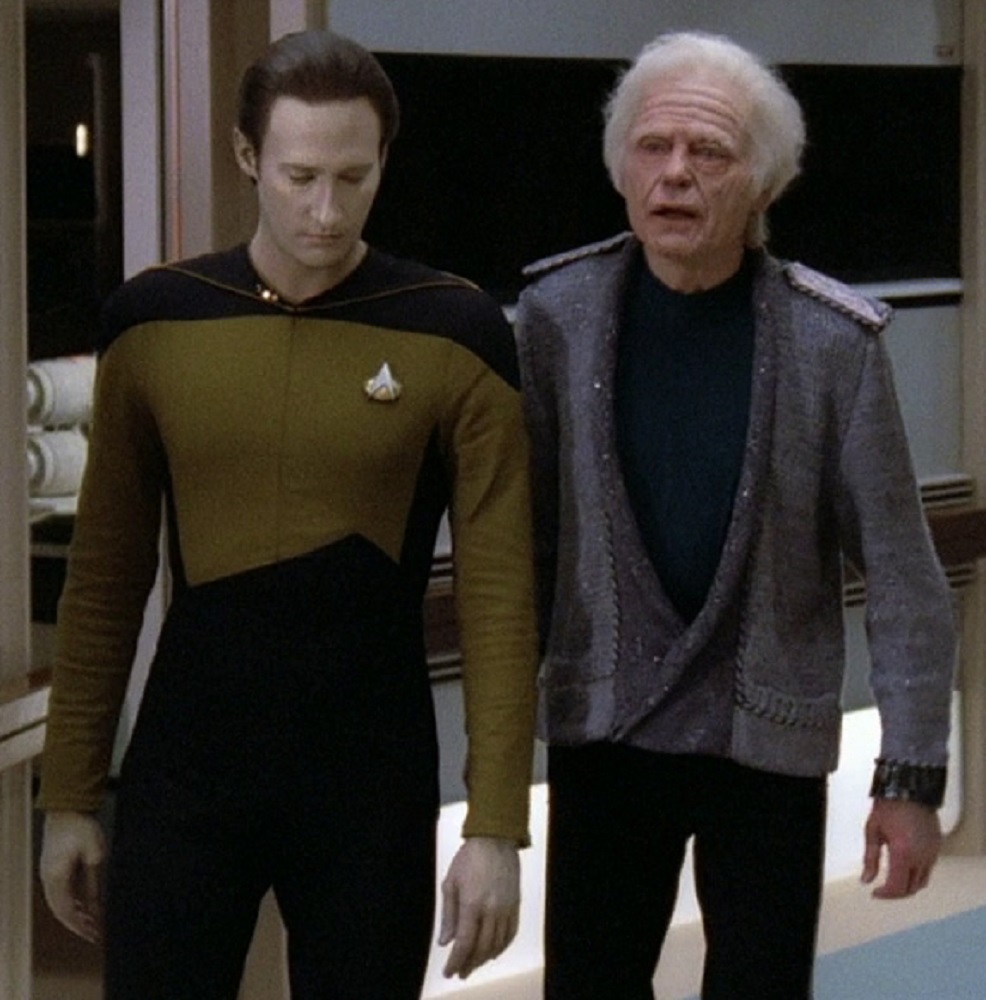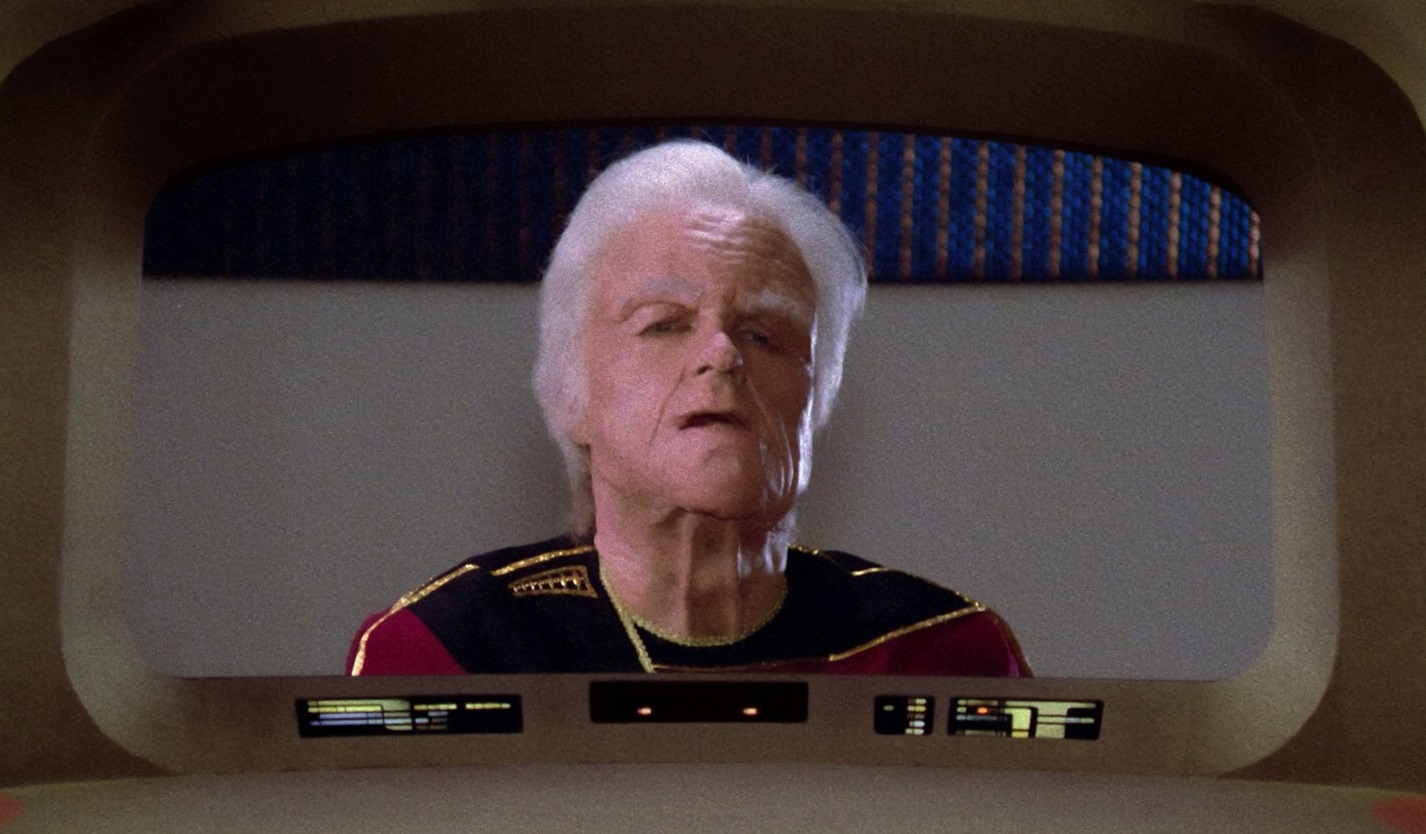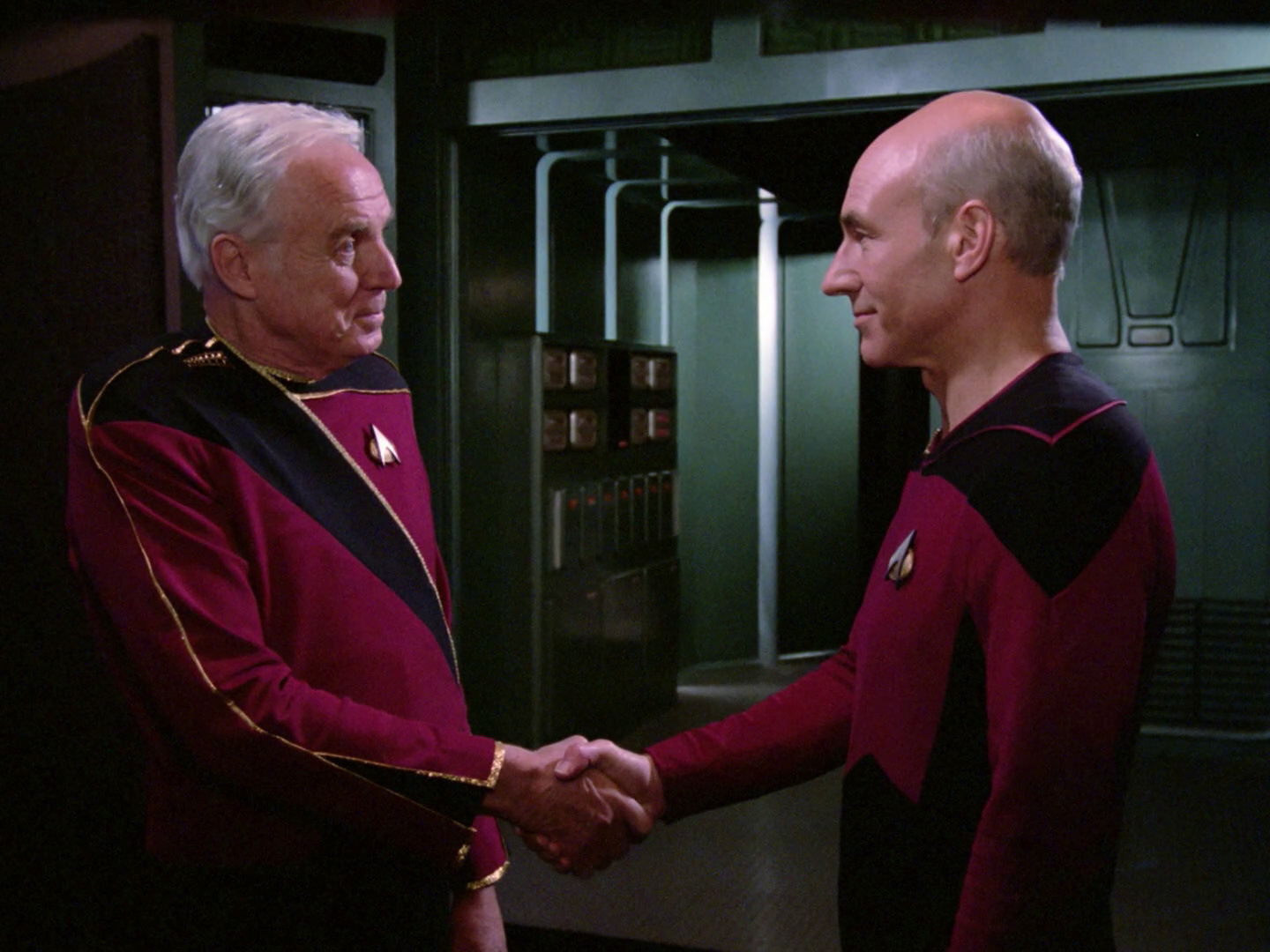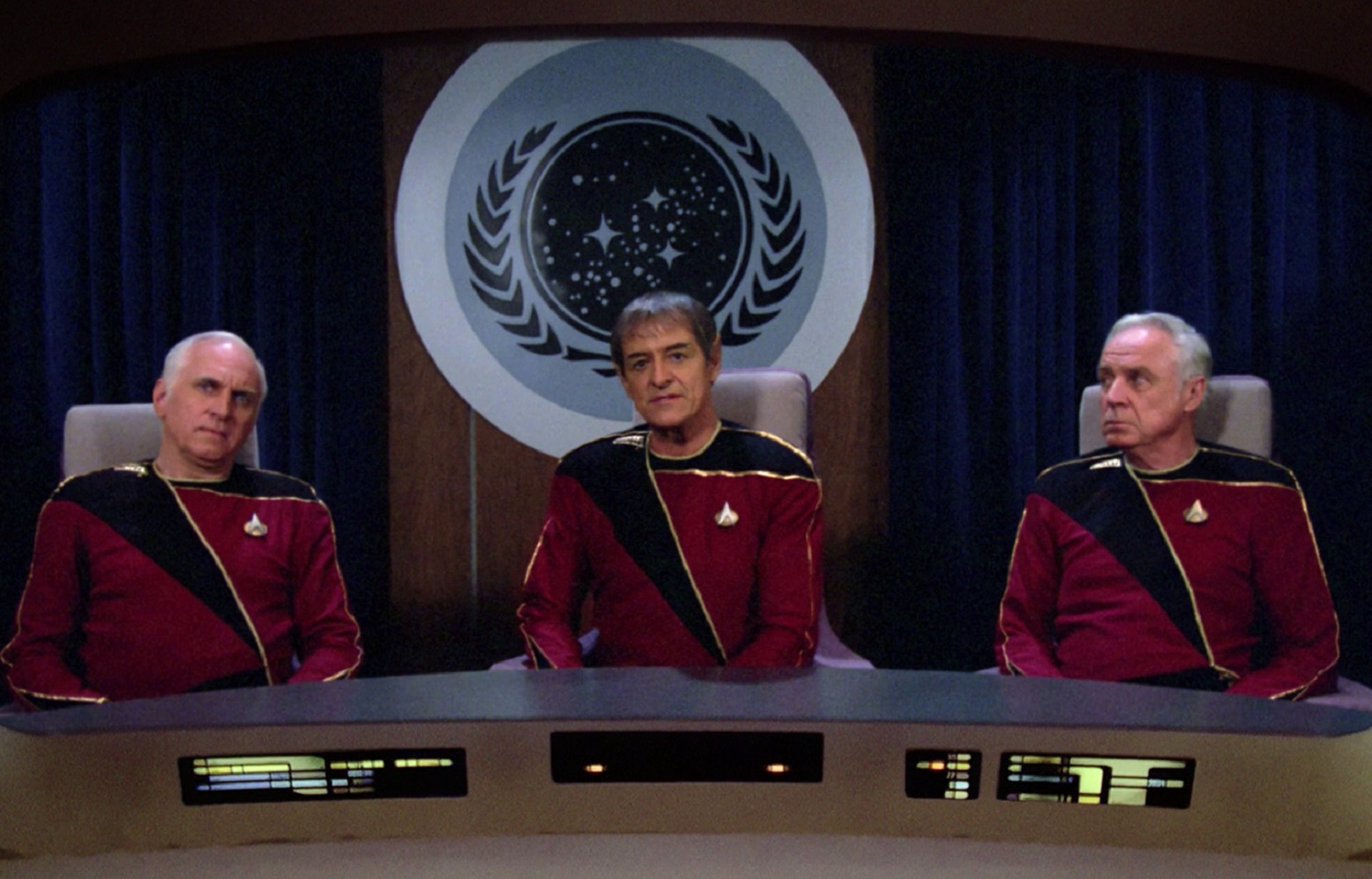Stylistic Influences
There were three different costume designers over the course of The Next Generation, the first of whom – and designer of the season one admiral uniform – was William Ware Theiss.
Theiss had been the costume designer on Star Trek: The Original Series and the aborted Star Trek: Phase II.
Although we never got to see what a Phase II admiral uniform might’ve looked like, in The Original Series, the precedent had been set for Starfleet “flag officers” to have their own unique uniform variation.
“Flag officers” seem to have included both commodores and the various admiral tiers.
With one exception, subsequent “flag officers” throughout The Original Series all wore the command division color, as evidenced by Commodore Barstow, Admiral Komack, Commodore Decker, Admiral Fitzpatrick, Commodore Wesley, Admiral Westervliet, and Admiral Fitzgerald, respectively.
There may have been a reason for this in-universe, or this may have simply been a costuming discrepancy.
Regardless, from the few admirals we saw during The Next Generation’s first season, Theiss established that they consistently wore the command division color.
And with one exception, TNG-era admirals would continue to wear the command division color, as determined by costume designers Durinda Rice Wood and Robert Blackman.
Two additional notes of interest regarding the TOS-era “flag officer” uniforms:
1 – They all had distinctive braid on their sleeves that indicated their higher rank.
2 – With the exception of Commodore Decker, they all wore a small metallic accent.
As a quick aside: it’s possible the flower-like “starburst” brooch wasn’t indicative of their rank, but instead represented assignment on a starbase, outpost, colony, or other facility.
If so, this would explain the apparent discrepancy with Commodore Decker’s chest insignia.
Commodore Stone was in command of Starbase 11, followed by Commodore Mendez – although curiously, the former wore red while the latter wore gold (for the same job).
Commodore Wesley commanded a fleet from the Lexington, whereas Commodore Decker only commanded the Constellation – the distinction possibly explaining the insignia discrepancy.
(The current posts of Admirals Komack, Fitzpatrick, and Westervliet weren’t clearly defined, but they presumably worked at Starfleet Command.)
It’s also possible that Decker’s insignia was simply a production error and should have been the “starburst” brooch worn by all the other commodores and admirals seen throughout the show.
Regardless of its specific representation, on a superficial level, I believe it worth noting that (again, with the exception of Commodore Decker), the TOS-era “flag officers” all wore a small metallic accent on their uniforms.
Fun fact – although the rank of commodore was common throughout The Original Series, it was conspicuously absent throughout The Next Generation, Deep Space Nine, and Voyager. Every TNG-era “flag officer” we saw in the shows and movies was an admiral.
However, there were a few TNG-era commodores listed in various assignment memos that quickly flashed by on-screen while Data was reading in the season one episode, “Conspiracy.”
Although it is very small text which would’ve never been legible before remastered HD and zips by very fast, I believe it worth noting that there is canonical evidence for TNG-era commodores – at least as of The Next Generation’s first season.
“Blink-and-you’ll-miss-it” examples notwithstanding, the Starfleet rank of commodore wouldn’t be seen again until Enterprise.
Of course, The Original Series was cancelled and Phase II was ultimately abandoned in favor of the first movie.
Robert Fletcher was the costume designer for the first four films, which were released prior to The Next Generation’s launch in 1987.
In The Motion Picture, we saw that “flag officers” again had their own uniform variant with distinctive rank braid around the lower sleeves, as well as a unique metal insignia on their chest.
(While officers and crew wore a similarly-shaped insignia, theirs were sewn-on patches with division-colored accents.)
In the subsequent three films (The Wrath of Khan, The Search for Spock, and The Voyage Home) the Starfleet uniform family still included several unique classes and variants.
However, for general duty, the wide variety of standard duty uniforms from TMP were heavily consolidated.
Commissioned officers wore the “monster maroons,” including admirals, whose uniforms were accented with gold trim and distinctive sleeve braid.
(It’s also worth noting that with these TWOK-era uniforms, the wearer’s rank was indicated by a “metal” insignia on the right shoulder.)
The Next Generation launched the year after The Voyage Home’s theatrical release, with Gene Roddenberry as showrunner and William Ware Theiss returning as costume designer.
If you’re interested in the Starfleet uniform timeline over “The Lost Era” (from the TOS movie-era uniforms to those Theiss designed for TNG), check out this blog post and its corresponding video:
And of more direct relevance, see this post (and its corresponding video) on the topic of the TNG-era uniform paradigm – why I believe TNG’s uniforms were conceived and designed the way they were:
In a nutshell, I believe Theiss’ uniform designs for The Next Generation to have been a direct continuation of his work on The Original Series, both in literal application and general aesthetic.
For example, he had already begun favoring knit fabrics toward the end of The Original Series, and all of his TNG-era uniform designs (including his season one admiral uniform) were made with jumbo spandex.
He also favored unstructured uniforms – the complete opposite of Robert Fletcher’s TWOK-era uniform designs.
He seems to have enjoyed experimenting with asymmetry, which strongly manifested in his TNG-era uniforms.
Here are a couple examples from TOS, alongside his TNG-era admiral uniform:
Despite clearly being a separate uniform style, Theiss’ admiral uniform design shared several characteristics with his TNG jumpsuits; specifically note the black yoke with its open-neckline.
Also note the division-colored torso and long sleeves, with a black lower half of the body (trousers, in this case).
Even the lower front of the jacket seems to have been shaped to mimic the asymmetrical paneling on the front of the jumpsuit.
There’s also the TOS-esque idiom that “flag officers” would wear some kind of unique metal brooch …
… and the TWOK-esque notion that rank would be indicated on the upper right shoulder …
… and the precedent that “flag officer” uniforms would be accented with gold trim …
And finally, the pleats across the bottom of Admiral Jameson’s uniform jacket were reminiscent of those at the bottom of Wesley Crusher’s gray “rainbow” sweater (another of Theiss’ designs … which in hindsight, may not have done this uniform any favors by the association).
Although I do wonder if William Ware Theiss may have taken the concept of a “flag officer” a bit too literally …?
Appearances
It wasn’t until over halfway through the season that the first “proper” admiral was seen in the show – Admiral Jameson, the first character to wear Theiss’ TNG-era admiral uniform.
A few episodes later, the character of Admiral Quinn was introduced, although his uniform was slightly different than Admiral Jameson’s. (We’ll take a closer look at the uniform evolution shortly.)
And finally, in the first season’s penultimate episode, Admiral Quinn returned, and there were a couple other admirals hanging out at Starfleet command wearing Theiss’ uniform designs.

